


























Cape Canaveral and sistership share 2024 honor.






Located in Northeast Florida, 2 nautical miles from the Atlantic Ocean, BAE Systems Jacksonville Ship Repair applies competence, efficiency, and integrity to your projects, keeping them within budget, and on schedule. With additional capacity and capabilities coming in early 2025, now is the time to consider BAE Systems. Contact us for more information and to subscribe to our Ship Repair announcements. Jacksonville, Florida | USA +1-904-431-2227 | jaxshiprepair@baesystems.us The simplified solution.



baesystems.com/commercialshiprepair

Follow BAE Systems on Social Media
14 Vessel Report: Panic Attacks
Emergency response vessels are vital to the safety of U.S. waterways and harbors.
20 Significant Boats of 2024
WorkBoat’s top boats of 2024 and Boat of the Year.
30 Cover Story: Hybrid Ferries
Shift to hybrid propulsion gains momentum in the U.S. ferry sector.
18 On the Ways
• Tennessee DOT christens new pushboat • New fuel barges commissioned in British Columbia • Eastern delivers ferry to Bridgeport & Port Jefferson Steamboat • Snow & Company launches second boat for New Orleans pilots • Seaspan launches first Protecteur-class oiler for RCN • All American to build electric ferries for San Francisco
34 Safer Seas
Mariners can derive valuable lessons from NTSB reports.
7 Longshoremen, management avert second US port strike.
7 Amogy raises millions in venture financing.
7 Grounded bulk carrier refloated in Philadelphia.
7 Towboat, bulker collide on Lower Miss. River.
8 On the Water: Know when to audible
8 Captain’s Table: WorkBoat heads to PVA's MariTrends.
9 Energy Level: 2025 opens with O&G sentiment shift.
9 Nor'easter: N. Atlantic whale lifespans dramatically lower.
10 Ports & Harbors: Disaster averted.
10 Credentialing Insight: NMC extends hours for applications.
11 Legal Talk: Shipboard injuries can be hard to understand.
12 Inland Insider: A win for the waterways.



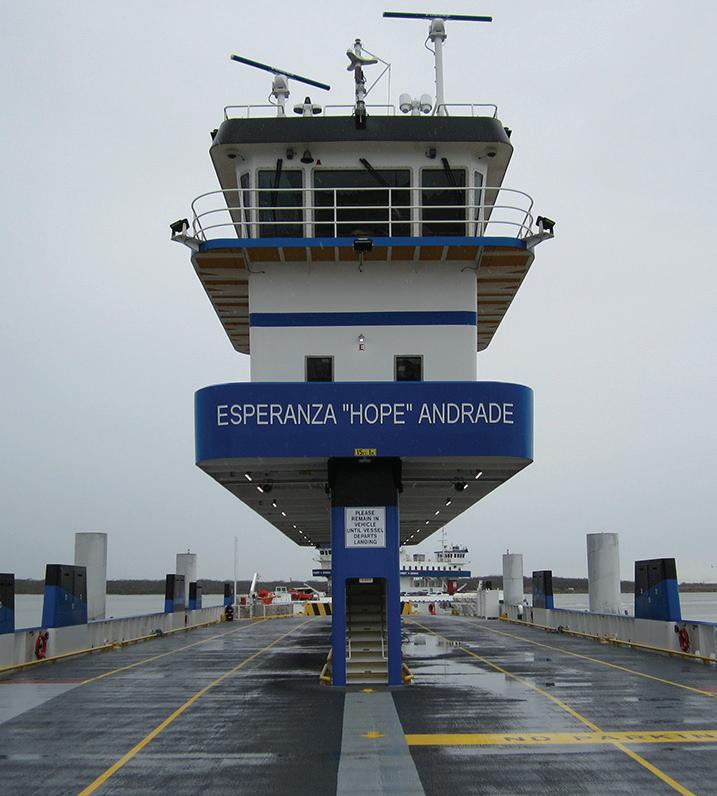




This month, I wrote a feature story about the growing adoption of electric-diesel hybrid propulsion in the U.S. ferry sector. A quick look at the ferry orderbook shows that the use of this technology is rapidly increasing. The data indicates that more ferry owners and operators are considering hybrid solutions than ever before.
During interviews for the story, I asked Ed Schwarz from Siemens Energy to share his advice for ferry owners and operators considering the switch to hybrid propulsion. “Do your homework, but don’t get paralyzed by it,” he said. “Maybe it’s a personality trait of engineers and technical people that they like to live in that design spiral forever and wait for the next greatest technology before they decide… This can be overwhelming.”
“Technology evolves very slowly in general, but also in the marine industry,” Schwarz continued. “Don’t always worry about what's going to be next… but rather see what's available and what has been done, and look to those technologies rst.”
Schwarz emphasized the power of collaboration and learning from the experience of others. “That’s how technology has evolved, how ship construction has evolved, how regulation requirements have evolved,” he said. “It’s very much a precedence-driven process of just saying, ‘Hey, somebody else stuck their neck out and did this. Were they successful or not? And can I learn from that?’”



Eric Haun, Executive Editor ehaun@divcom.com
Casco Bay Lines in Maine is among those currently adopting hybrid propulsion. Its operations manager, Nick Mavodones, gave advice similar to Schwarz’s: “It is important to be willing to learn from the experience of other operators that have been through this process and also be willing to share your experiences with those that come after you,” Mavodones said.
New technology uptake is rarely simple or straightforward. Patience, Mavodones noted, will be key. “Be aware that [the integration of] this technology will take more time until it becomes a more common practice for the shipbuilding industry to do this type of work,” he said. “We all must work patiently and cooperatively with the industry to make this successful.”











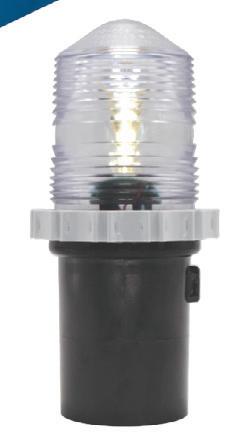




Meets 2 mile requirement for marking of dredge pipelines


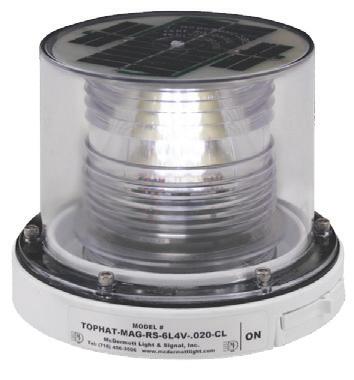





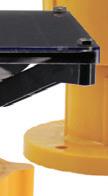

Permanent mount LED lighting for bridges, docks, and barges













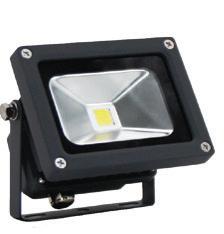














Navigation Lights



1 to 3 mile visibility for aids to navigation and applications such as buoys, docks, barges, and temporary lighting






















For vessels greater or less than 50 meters Certified to meet UL 1104 and Subchapter M


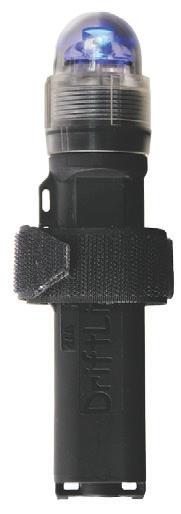


Solar or battery powered barge navigation lights for unmanned barges per UL1104 Regulatory Buoys


Available for all applications *Available with or without lighting*





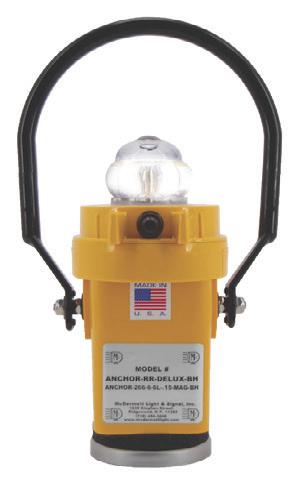































































































EXECUTIVE EDITOR Eric Haun / ehaun@divcom.com






















2/14

SENIOR EDITOR Ken Hocke / khocke@divcom.com
CONTENT EDITOR Benjamin Hayden / bhayden@divcom.com
CONTRIBUTING EDITOR Kirk Moore / kmoore@divcom.com
CONTRIBUTING WRITERS
Tim Akpinar • Capt. Alan Bernstein • Steve Blakely • Dan Bookham Arnie Brennaman • G. Allen Brooks • Bruce Buls • Michael Crowley
Jerry Fraser • Nate Gilman • Pamela Glass • Joel Milton • Chris Richmond
DIGITAL PROJECT MANAGER / ART DIRECTOR Doug Stewart / dstewart@divcom.com












Technology















Boat - Militar utboards

















ADVERTISING ACCOUNT EXECUTIVE S
Mike Cohen 207-842-5439 / mcohen@divcom.com
Kristin Luke 207-842-5635 / kluke@divcom.com
























Krista Randall 207-842-5657 / krandall@divcom.com
Danielle Walters 207-842-5634 / dwalters@divcom.com
ADVERTISING COORDINATOR
Wendy Jalbert 207-842-5616 / wjalbert@divcom.com
















Vessels lectronics


















DISTRIBUTION 4/28 - 5/1 - Houston TX ffshore







Producers of The International WorkBoat Show and Pacific Marine Expo www.workboatshow.com • www.pacificmarineexpo.com
PRESIDENT & CEO Theodore Wirth / twirth@divcom.com
VICE PRESIDENT Wes Doane / wdoane@divcom.com



- 4/4 IPF - 5/5 - 5/8 - Virginia Beach, VA



























PUBLISHING OFFICES

Main Office 121 Free St., P.O. Box 7438, Portland, ME 04112-7438 207-842-5608 • Fax: 207-842-5609
MAGAZINE SUBSCRIPTION INFORMATION cs@e-circ.net • 978-671-0444 (Monday-Friday, 10 AM – 4 PM ET)




































































TheMaritime Administration (MARAD) invites public comments on our intention to request approval from the Of ce of Management and Budget (OMB) to renew an information collection in accordance with the Paperwork Reduction Act of 1995. The proposed collection OMB 2133-0545 (MARAD Jones Act Vessel Availability Determinations) is used to collect information about the availability of quali ed Jones Act vessels. Since the last renewal, there was a reduction in the public burden for this collection. We are required to publish this notice in the Federal Register to obtain comments from the public and affected agencies. Comments must be submitted on or before March 10, 2025. You may submit comments identi ed
by Docket No. MARAD-2024-0168 through one of the following methods:
• Federal eRulemaking Portal: www. regulations.gov. Search using the above DOT docket number and follow the online instructions for submitting comments.
• Mail or hand delivery: Docket Management Facility, U.S. Department of Transportation, 1200 New Jersey Avenue SE, West Building, Room W12140, Washington, D.C. 20590, between 9 a.m. and 5 p.m., Monday through Friday, except on federal holidays.
All submissions must include the agency name and docket number for this rulemaking.
All comments received will be posted without change to www.regulations. gov including any personal information






provided.
Comments are invited on: (a) whether the proposed collection of information is necessary for the Department's performance; (b) the accuracy of the estimated burden; (c) ways for the Department to enhance the quality, utility, and clarity of the information collection; and (d) ways that the burden could be minimized without reducing the quality of the collected information. The agency will summarize and/or include your comments in the request for OMB's clearance of this information collection.
For further information contact: Lance Murray, 202-617-7792, Of ce of Cargo and Commercial Sealift, Maritime Administration, U.S. Department of Transportation, 1200 New Jersey Avenue SE, Washington, D.C. 20590, Email: Cargo.MARAD@dot.gov.
This notice was published in the Federal Register on Jan. 6, 2025.








The union representing 45,000 longshoremen on the U.S. East and Gulf Coasts and their employers said they reached a tentative agreement in early January to prevent additional port strikes, which had posed a risk to supply chains and threatened harm to the U.S. economy.
In a joint statement, the International Longshoremen's Association (ILA) and the United States Maritime Alliance (USMX) described the deal as a “win-win.” The tentative deal on a new six-year contract addresses the contentious issue of automation, which had been one of the main sticking points in the negotiations.
“This agreement protects current ILA jobs and establishes a framework for implementing technologies that will create more jobs while modernizing East and Gulf coast ports –— making them safer and more ef cient, and creating the capacity they need to keep our supply chains strong,” the groups said.
Terms of the deal were not disclosed. “The two sides agreed to continue to operate under the current contract until the union can meet with its full Wage Scale Committee and schedule a rati cation vote, and USMX members can ratify the terms of the nal contract,” the groups said.
Following the expiration of the previous contract on Sept. 30, 2024, a three-day strike by the ILA in October led to a sharp increase in shipping rates and signi cant cargo delays at the 36 ports impacted. Longshoremen resumed work after employers agreed to a 61.5% wage increase over the next six years, though terms on automation were not nalized.
Negotiations for a new contract were extended until Jan. 15 to nalize an agreement on automation technology, which reduces the need for human labor in cargo processing and handling. This technology, already used to some extent at all major U.S. ports, enhances the ef ciency of moving containers in and out of terminals, according to the USMX. However, the ILA views automation as a threat to its workforce.
President-elect Donald Trump has voiced his support of the ILA’s position. “I’ve studied automation, and know just about everything there is to know about it. The amount of money saved is nowhere near the distress, hurt, and harm it causes for American Workers,” said Trump.

Ammonia-to-power solutions provider Amogy announced that it raised $56 million in venture fi nancing. The Brooklyn, N.Y.-based company said it will use the funds to help commercialize its technology in maritime and stationary power generation markets. The round, co-led by existing investor Aramco Ventures and new investor SV Investment , brings Amogy's total funding since inception to over $270 million.
ABahamas-registered bulk carrier that ran aground in the Delaware River near Philadelphia was refl oated, the U.S. Coast Guard said. The 623' ship was transiting northbound with a cargo of approximately 45,000 tons of salt when the incident occurred. No injuries were reported. Following the incident, marine inspectors found that four of the vessel’s ballast tanks and one empty fuel tank were damaged as a result of the grounding.
mariners were rescued from the water after a towboat sank in a collision with a Liberian-registered bulk carrier on the Lower Mississippi River. The 87' towboat Patrick J. Studdert sank after colliding with the 738' bulk carrier Clara B near Mississippi River mile marker 123, just north of the Hale Boggs Memorial Bridge in St. Charles Parish. La. All fi ve people from the towboat were rescued from the river by nearby vessels and were transferred to local emergency medical services, according to the U.S. Coast Guard. The bulk carrier docked upriver with all crewmembers accounted for.

BY JOEL MILTON
Joel Milton works on towing vessels. He can be reached at joelmilton@yahoo.com.
It’s a fall Sunday afternoon and the teams are squared off on the football field, offense and defense. A substitute runs to the huddle with the next play from the offensive coordinator, relaying it to the quarterback. It’s third and one – an obvious running situation – and an off-tackle is called. The quarterback calls the play and the snap count to his squad, and they break huddle and line up.
The quarterback scans the defense while barking out the cadence and, suddenly, things aren’t looking very promising. Both safeties have moved way up into the slots, the classic warning signs of a zero blitz.
The quarterback sees this development, interprets it cor-
WorkBoat heads to PVA’s MariTrends
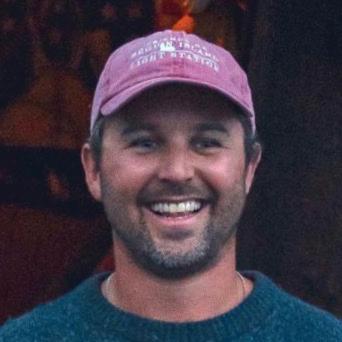
WBY BEN HAYDEN
hen preparing to attend industry conferences, I typically begin by reviewing the agenda of educational sessions to identify topics that would be most relevant and informative for WorkBoat readers. My focus, I believe, differs from that of most attendees, who are likely more concerned with how industry updates impact their specific sector.
As I prepare for the Passenger Vessel Association’s (PVA) upcoming MariTrends conference, taking place Jan. 27-30 in Savannah, Ga., my approach remains the same. According to PVA’s website, the event focuses on supporting the economic well-being of U.S. passenger vessel operators and businesses, while emphasizing safety and security in maritime operations. There will undoubtedly be plenty of valuable information to report to the WorkBoat audience.
The session that most interests me is titled “The Future of Electrification Is Now,” which is sure to cover advancements in vessel electrification. While this topic feels both
rectly, and then must very quickly change the plan. Depending on the circumstances, a time-out might be called. Or maybe the defense doesn’t show blitz until just before the snap, with the play clock ticking down to zero, leaving the quarterback no time to adjust. Take the snap and immediately spike the ball? Or throw it out of bounds to avoid a potential sack or big turnover?
Most of the time, what happens is that the quarterback “calls an audible.” That is, he sees a new threat (which may also offer an opportunity) and cancels or modifies the original play at the line of scrimmage by calling out (in code) a different play that could work better against the defensive alignment presented. The rest of the offense must quickly adjust to the new reality. Failure to do so has negative consequences.
Every day, people make plans and the gods laugh. Circumstances often change, a little or a lot, before even the most carefully laid plans can be executed. If you want to succeed, the team (you and your crew), must have the ability to “read the defense,” adapt quickly and effectively to what is, not what was, and carry on. That requires a flexible, adaptable mindset that can just go with the flow of events and make the best of them. That is the essence and art of tugboating for all hands.
forward-thinking and somewhat over-discussed, I think PVA has done a good job assembling a panel with diverse expertise from across the industry.
The session will include operators managing San Francisco Bay Ferry’s electrification program, engineers involved in building a fully electric 150-passenger ferry, project managers from engine companies addressing the complexities of shipboard electrification, vessel operators discussing electric propulsion system integration, and representatives from electrification installation firms covering funding and regulatory challenges. The panel also offers regional diversity, with representatives hailing from New York City, Iowa, California and New Zealand.
As a shipyard reporter, I’m particularly interested in how yards are managing these newbuild programs while ensuring Jones Act compliance. Many components of electric propulsion systems are currently European made, which presents a challenge given the 70/30 shipbuilding rule, which mandates that 70% of a U.S. vessel’s weight come from American sources. Since a vessel’s power and propulsion system alone can account for about 20% of the build, there is limited room for other non-American components.
Next month, I’ll be writing WorkBoat ’s vessel report on passenger vessels. Hopefully, by that time, I’ll be able to shed some light on this issue.
Editor’s Note: Regular WorkBoat columnist Capt. Alan Bernstein will return to write the Captain’s Table column for the March issue.

CrudeBY G. ALLEN BROOKS
G. Allen Brooks is an energy analyst. In his over 50year career in energy and investment, he has served as an energy security analyst, oil service company manager, and a member of the board of directors for several oilfield service companies.
oil prices peaked in April 2024, as did investment sentiment towards energy stocks. Energy stocks were at the top of the Standard & Poor’s 500 Index industry sector rankings during the early months of last year before collapsing with late spring’s drop in oil prices.
For the second half of 2024, energy investments were shunned as OPEC+ struggled to keep oil prices from falling to decade lows among weak global oil demand and surging output from the U.S. and other non-OPEC producers. Promises of higher oil demand and less supply that would lift prices failed to entice investors into purchasing energy company shares.
Mother Nature altered energy dynamics with an early blast of cold temperatures that led Americans and Europeans to turn on their heaters, causing petroleum supplies in North America and Western Europe to drop. Dwindling energy supplies boosted prices and stimulated investors to revisit petroleum company fundamentals – solid balance sheets, limited capital investment, sustained production, and increasing investor returns via dividends and share repurchases.
Turning the calendar allowed industry participants and investors to reassess the near-term and long-term outlook for petroleum companies. Will the use of oil and gas end soon, or not for decades? The cold weather has highlighted some of the shortcomings of renewable energy. The inability of renewable energy to deliver power when people need it means hydrocarbon fuels must provide the missing energy.
Hydrocarbon energy has ameliorated human suffering. For the past two centuries, it has delivered improved living standards to billions of people, but hundreds of millions need access to cheap and reliable energy.
Critics of hydrocarbon energy often fail to credit it for contributing to agricultural growth and greater food stocks. Moreover, hydrocarbon energy has aided human longevity, freed women from tedious and dangerous household chores, and provided tools for helping educate our youth. It provides the building blocks for our clothes, medicines, transportation, and every device needed by renewable energy.
Energy companies have and continue to reduce climatedamaging emissions. That effort must continue. The industry also must discover and develop new hydrocarbon resources to meet the world’s growing energy demand. Life will be better with more rather than less hydrocarbon energy. Investors seem excited by higher oil prices and energy's improving outlook.

BY KIRK MOORE
Contributing Editor Kirk Moore, with over 30 years of experience, joined WorkBoat in 2015. He has won multiple awards for his marine, environmental, and military reporting. Kirk Moore at kmoore@divcom.com
South Atlantic right whales can have natural lifespans exceeding 100 years, but human-caused mortality has deeply driven down median life expectancy among their North Atlantic cousins to just an average 22 years, according to recent research.
North Atlantic right whales are highly endangered, with a population estimated at 372 animals in October 2024, according to the National Oceanic and Atmospheric Administration.
Along with the more common humpback and other whale species, right whales have been subjected to higher mortality in eastern U.S. waters in recent years. NOAA and whale research groups blame ship strikes and fishing gear entanglement, while opponents of offshore wind power projects try to correlate whale deaths with project surveys and construction.
The paper, “Extreme longevity may be the rule not the exception in balaenid whales,” was published Dec. 20 in the journal Science Advances. Lead author Greg Breed, a University of Alaska Fairbanks associate professor, noted the sharp north-south difference in lifespans between the closely related species is primarily due to human impacts.
“North Atlantic whales have unusually short lifespans compared to other whales, but this isn’t because of intrinsic differences in biology, and they should live much longer,” he said. “They’re frequently tangled in fishing gear or struck by ships, and they suffer from starvation, potentially linked to environmental changes we don’t fully understand.”
Historically, right whales were decimated by early American whalers and later by industrial whaling. The species slowly recovered after whaling was restricted by international treaties, but the North Atlantic species has suffered new losses off the U.S. East Coast.
North and south whale populations “have essentially identical life histories. Their currently believed maximum lifespans are both around 70-75 years,” the researchers reported. “Our results suggest that median life span of southern right whales is around 74 years, and a significant fraction live past 130 years, while North Atlantic right whales are currently living remarkably short lives, with median lifespans of only 22 years, and only a small fraction surviving past age 45.”
One U.S. environmental group, Public Employees for Environmental Responsibility, noted the paper is based on decades of data through 2020, and asserted “it also undercuts the idea that offshore wind power is an important driving factor on right whale mortality.”

BY ERIC HAUN
Executive Editor Eric Haun is a New York-based editor and journalist with over a decade of experience covering the commercial maritime, ports and logistics, subsea, and offshore energy sectors.
Longshoremen along the U.S. East and Gulf Coasts surprised many analysts when they returned to work on Oct. 4, 2024, just days after starting a strike over disputes with port operators regarding dockworker pay and terminal automation. Ocean carriers, U.S. supply chains, and the millions who depend on them breathed a sigh of relief when the feared work stoppage—predicted by many to last for weeks or more and disrupt American supply chains and the economy—ended after just three days.
U.S. ports quickly resumed operations, but the threat of future strikes remained. The agreement reached in October between the International Longshoremen’s Association

BY NATE GILMAN
Nate Gilman, president of MM-SEAS USCG Licensing Software, uses his hawsepiping experience to support mariners and workforce development. Connect on LinkedIn.
The Coast Guard has extended the operating hours for its National Maritime Center (NMC) Customer Service Center by 90 minutes. As of Sept. 30, 2024, mariners and third parties such as employers, support organizations, and Merchant Mariner Credential (MMC) consultants are able to contact the NMC until 5:30 p.m. ET. The new hours are Monday through Friday, 8 a.m. to 5:30 p.m. ET (5 a.m. to 2:30 p.m. PT). This expanded access is available via phone at 1-888-IASKNMC (427-5662) or through Live Chat. The Coast Guard advises that the Customer Service Center is busiest around midday Eastern, recommending calls between 8 a.m. and 9 a.m. ET for quicker service.
“As the national shortage of merchant mariners continues, any little bit helps. I am so happy the Coast Guard has expanded access for mariners on the West Coast,” said Sarah Scherer, VP of Pacific Coast Operations at the Transportation Institute. “This added time will allow mariners to solve
(ILA) labor union and the United States Maritime Alliance (USMX) employer group focused solely on dockworkers’ pay, granting a 61.5% wage increase over six years and extending the previous contract until Jan. 15, 2025. The issue of terminal automation, however, was left unresolved.
All major U.S. ports use some form of automation technology such as automated cranes, container-handling systems, and guided vehicles. Port operators say automation improves efficiency in moving containers in and out of terminals, while port workers contend that the technology reduces the need for human labor and leads to job losses.
Months passed, and on Jan. 8, the ILA and USMX reached a new tentative agreement to prevent additional port strikes, once again averting disruptions to supply chains and the U.S. economy. The two sides called it a “win-win” in a joint statement announcing the deal. Terms were not disclosed.
“This agreement protects current ILA jobs and establishes a framework for implementing technologies that will create more jobs while modernizing East and Gulf coast ports—making them safer and more efficient, and creating the capacity they need to keep our supply chains strong,” the groups said. The deal must be ratified by the USMX and some 45,000 members of the ILA.
problems with their USCG applications faster so they can get back to work.”
The Coast Guard recommends using the NMC Check Your Status tool to verify the status of your application instantly, without the need to call in, as well as using the NMC Credential Verification tool to verify the validity of your credential if there are questions about your Merchant Mariner Credential. The NMC Live Chat chatbot, available 24/7, can assist with many inquiries, providing immediate answers without waiting for a representative.
If unable to reach the Coast Guard by phone or chat, mariners can email IASKNMC@uscg.mil. Emails should include the mariner’s full name, reference number, and relevant details to avoid delays, though response times depend on email volume.
The Customer Service Center, operated by USCG contractor Insight Technology Solutions LLC, provides general credentialing information such as application status, guidance on using NMC checklists, and assistance with scheduling tests at Regional Exam Centers. While the center does not evaluate qualifications or process applications, its staff can direct users to the appropriate personnel. All credentialing information provided by the Customer Service Center is also available on the NMC website and is subject to evaluation upon submission of a complete application.
The Coast Guard’s extended service hours aim to streamline the credentialing process for mariners, enhancing accessibility and efficiency. This commitment supports the maritime workforce, allowing mariners to focus on their critical roles in the industry.

BY TIM AKPINAR
Tim Akpinar is a Little Neck, N.Y.-based maritime attorney and former marine engineer. He can be reached at 718-224-9824 or t.akpinar@verizon.net.
The Jones Act and similar laws governing injuries to vessel crews, shipyard workers, and offshore oil workers are often straightforward. The dif cult part can be proving certain types of injuries under the guidelines of these laws.
If a deckhand trips on a cargo hatch and falls, the medical evidence is often clear. An MRI shows torn ligaments. But what about settings where things aren’t so clear-cut? Think of a tankerman aboard a barge who almost collapses on a summer day after working around fumes from heavy fuels or solvents.
How does a court evaluate a case like that? Exposure to hydrogen sul de or paraxylene doesn’t show itself on an x-ray. Instead, the court is faced with the tankerman’s own account of dizziness, nausea, severe headaches, or shortness


of breath. Additionally, there are tests, such as Forced Vital Capacity, which show the amount of air someone can exhale after taking a deep breath. This can serve as evidence of respiratory damage. Courts also often look to the opinion of experts. In the aftermath of the Deepwater Horizon disaster, environmental medicine physicians and forensic epidemiologists were called in on the issue of a threshold of exposure. Signs of exposure to harmful shipboard substances could show up in blood tests, urine tests, or tissue analysis. Courts might also look at changes in someone’s motor function, learning function, or memory function after exposure. Neuropsychological/neurocognitive evaluations are mentioned in the Coast Guard’s Navigation and Vessel Inspection Circular (NVIC) 04-08, which arises in current maritime case law. Good diagnostic skills are key with these types of injuries. This can include a doctor or nurse recognizing a connection between a shipyard fabricator’s nervous disorders or kidney damage and their prolonged exposure to welding fumes. These cases can be dif cult due to their latency periods. That means the delay between exposure and injury. Shipyard workers who installed asbestos in the 1940s and 50s sometimes had respiratory symptoms show up 20 or 30 years later.





BY PAMELA GLASS
Pamela Glass is the Washington, D.C., correspondent for WorkBoat. She reports on the congressional committees and federal agencies that affect the maritime industry, including the Coast Guard, Marad and Army Corps of Engineers.
The inland waterways system, and the barging and other industries that depend on it, won a major victory when Congress gave overwhelming approval to a 2024 water resources bill and sent it to the White House for presidential signature in December.
The legislation, known as the Thomas R. Carper Water Resources Development Act of 2024, passed the House on Dec. 10 and the Senate on Dec. 18 and was signed by President Biden on Jan. 4.
The bill helps the U.S. Army Corps of Engineers maintain and improve the
country’s inland waterways infrastructure, ports, harbors, and ood and storm protections. The nal version, which had been negotiated by members of the House and Senate, passed both as members rushed to close down their legislative calendar for the year.
Two of the bill’s most signi cant provisions relate to how the federal government nances inland infrastructure and port dredging going forward.
In a move welcomed by the barge industry and its customers, Congress will shift the federal cost-sharing formula for





inland waterways construction. Going forward, the Inland Waterways Trust Fund share ( nanced by a diesel tax on the barge industry) will be reduced from 35% to 25%. The federal share will increase from 65% to 75%.
This change is expected to lead to lower project costs, speed up project timelines and make more money available for critical lock and dam improvements along the nation’s navigable rivers, advocates say.
Speci cally, with annual trust fund revenues of $115 million, the new cost-share formula will allow for $460 million in appropriations, an increase of $131 million above the current 65/35% formula, according to the Waterways Council, Inc., an industry-supported group that advocated for the change and calls it a major win for river infrastructure improvements.
Work on modernizing the aging, often failing system has accelerated in recent years, leading to completion of several projects that have languished for decades, and allowing others to reach key construction milestones. This is due to steady funding commitments from Congress, including President Biden’s infrastructure package that included money for river infrastructure.
In a big win also for the nation’s ports, the legislation authorizes increased investment in harbor maintenance and port dredging by making signi cant changes in the depth thresholds the government uses to fund such projects. For construction dredging, the Corps of Engineers will now fund 75% of construction dredging projects for depths between 20' and 55', up from the previous cap of 50' depths. For operations and maintenance dredging, the Corps will fully fund projects up to 55', up from the current 50' threshold. Proponents say the new depths will allow U.S. ports to accommodate the increasingly large-sized containerships and make them more globally competitive.

Additionally, the bill authorizes 21 new projects totaling $10.7 billion, including ood-risk management in Louisiana and New York’s Staten Island and restoration work in Florida’s Everglades.



Our job board & marketplace has listings from the commercial marine industry’s top employers.















By Ken Hocke, Senior Editor
Today’s emergency response vessels are specialtybuilt, multi-mission boats constructed from designs by manufacturers like Moose Boats, Vallejo, Calif.; MetalCraft Marine, Kingston, Ontario, Canada; and North River Boats, Roseberg, Ore. Here are the latest deliveries from these three shipyards.
A prime example of a new emergency response vessel came from Moose Boats, which delivered a 46'x16' aluminum catamaran emergency response vessel to the Boston Fire Department’s Special Operations Dive Team at the end of 2024. The boat, which was funded internally and has accommodations for 12 crew/passengers, was built using the shipyard’s M1 design.


“This vessel will be used speci cally by the dive team for search and rescue,” said Ken Royal, Moose’s vice president of sales. “The ample room afforded by this catamaran will allow for storage of the vast array of dive equipment and specialized sonar gear needed to run their missions.”
Main propulsion comes from a pair of Cummins QSC 8.3-liter diesel engines producing 600 hp each. The mains connect to HamiltonJet HJ322 waterjets through Twin Disc 5075SC marine gears, giving the boat a running speed of 40 knots. Ship’s service power is the responsibility of a 9-kW Cummins Onan diesel generator with remote panel.
Ancillary equipment includes heated decks and heated windshields, enclosed ushing head, proprietary ushmounted dive ladder, proprietary dive cylinder bracket mounts with folding bench seating, saltwater and freshwater washdown stations, 275 gpm transom mounted re ghting pump, and 50-amp shore-power service.

“The cabin is thermostatically controlled with both heating and AC for crew and victim comfort,” said Royal. “Because this vessel will be operating throughout the waterways of Boston, Moose Boats has installed heated decks to ensure good footing by preventing ice buildup during winter conditions.”
The electronics suite includes two Raymarine Axiom 12 multifunction displays (MFDs) with heading sensor for GPS/ radar overlay; AVX Express Control System with autopilot; two ICOM 424 VHF radios; FLIR M625CS; Raymarine AIS trans/receiver 700; Klein 600 sonar with multiple outlets and dedicated station; and 2.5-kW inverter/charger with remote monitoring panel.
Moose is building a second vessel for the Boston Fire Department, an M2-38 jet-powered catamaran speci cally to be used for re ghting and rescue operations. The boat, currently under construction, will have a hydraulically driven opening bow door to assist with beaching operations.
Having two hulls allows for a stable beach landing so that crew can safely disembark and board while carrying patients on backboards and other equipment necessary to the operation. The re ghting system will consist of two Darley re pumps off a power-takeoff system that will have a combined ow of approximately 4,100 gpm.
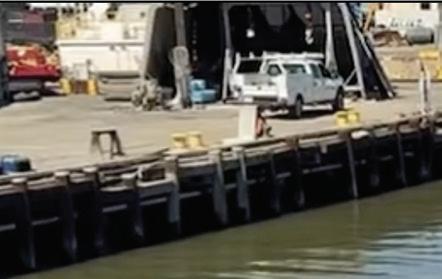


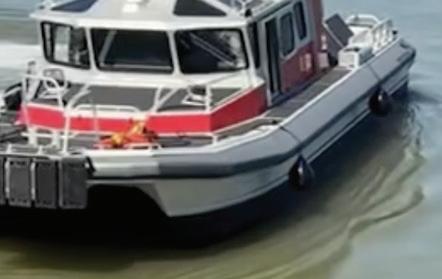


“Both of the Moose Boats’ M1-46 and M2-38 catamarans provide for a more comfortable ride in heavy sea conditions relative to any monohull of like size,” said Royal. “Additionally, these vessels are easier to maneuver due to the wide separation between port and starboard propulsion systems. The combination between level (due to having two hulls) and smooth riding conditions allows for crew comfort and less fatigue when responding to emergencies.”
MetalCraft Marine, Kingston, Ontario, Canada, delivered a FireStorm 43/44 model fi reboat to the U.S. Virgin Islands (USVI) Fire and Emergency Medical Services.
The patrol and fi re versions of the 43/44 have been extremely successful for MetalCraft since the fi rst boat was launched in 2020. That vessel, a patrol boat with chemical, biological, radiological, and nuclear detection capabilities for the Los Angeles port police, was awarded the Significant Boat of the Year award at the New Orleans International Workboat Show
The 43/44, as its name implies, can be 43' or stretched to 44'. Its hull shape is a departure from the earlier FireStorms as it has been modified to closely resemble the Interceptor fi ne entry hull shape. Unlike previous FireStorms, it has




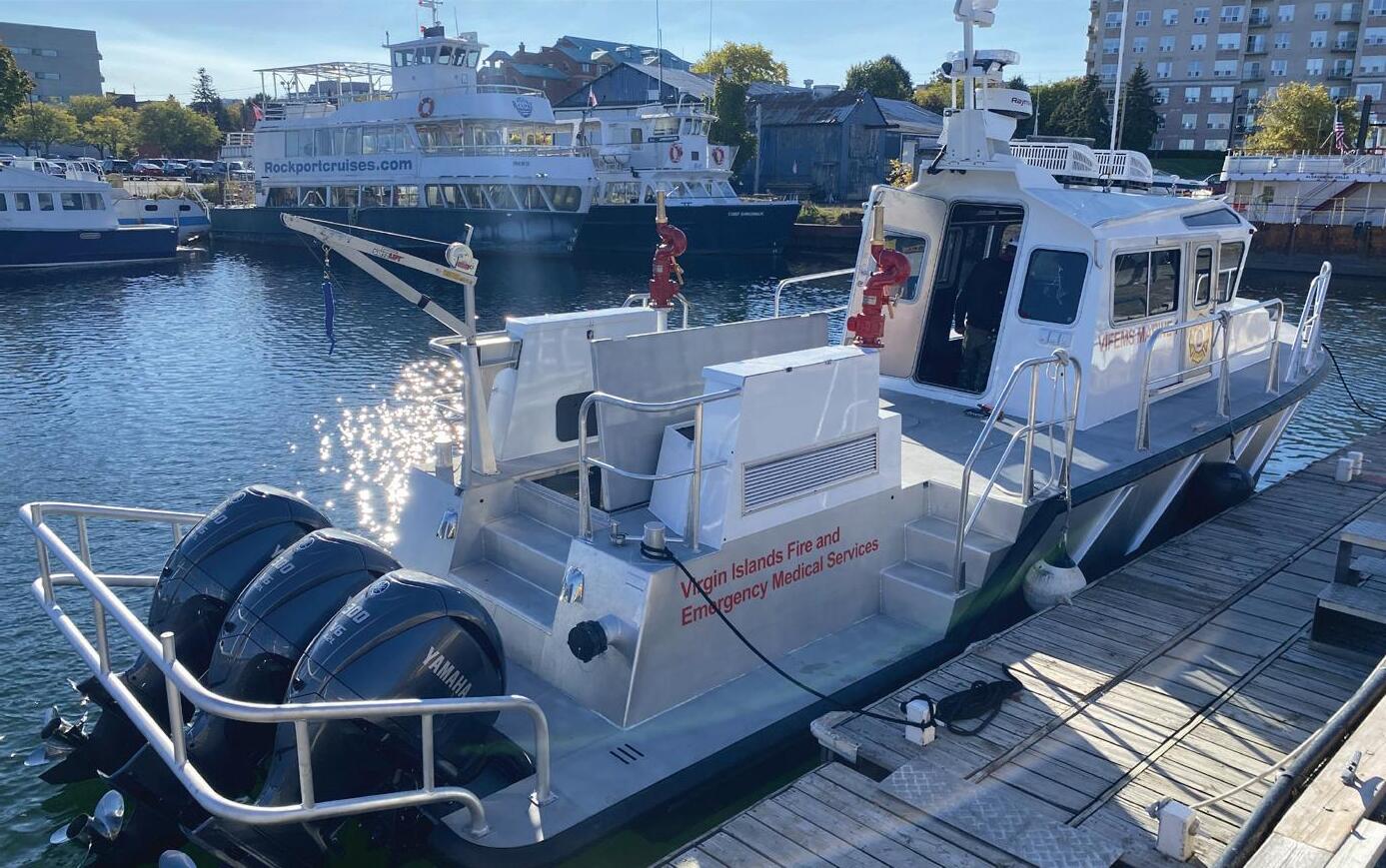

a 22 ° aft deadrise versus 18 ° and is considered a variable deadrise hull. The original aft delta pad was maintained to be able to get on plane with much higher weights.
The boat’s structure is designed to ISO 12215 Category B — that’s 9 ' to 16' wave heights — and stability also to ISO 12217 Category B. The cabin features sliding doors and 6'10" headroom, and the cuddy cabin has twin patient berths. The boat has forward and side spotter windows for coming alongside island freighters or large yachts. The below deck storage includes room for extra search and rescue gear as well as pails of fire extinguishing foam.
“The USVI Fire Service took one look at this boat and knew this boat could easily service the main island of St. Thomas and neighboring St. John,” said Bob Clark, MetalCraft’s contracts manager, “but they also knew she could handle an ocean crossing over to St. Croix when needed. Normal wave heights during the winter wind season are in the 8' to 10' range.”
The boat is powered by three Yamaha 300-hp outboards that translate into 42 knots at full throttle, giving the vessel a range of 230 nautical miles with 10% reserve.
The boat is also fitted with a Darley 1,500-gpm pump that can supply more than 2,000 gpm at 150 PSI.


“The boat will be an asset for all local search and rescue as well as offshore calls,” said Clark. “The Virgins are home to the largest charter boat fleet in the Caribbean and also have the largest mega-yacht fleet in the islands.”
MetalCraft also delivered four of its Interceptor patrol boats to the USVI Natural Resources Police in 2024.
North River Boats, Roseberg, Ore., was putting the finishing touches on a new 39'x11'x5'1-1/4" Liberty harbor patrol, law enforcement, and fireboat in early January for an owner who requested anonymity. The aluminum

Atapproximately 3:15 a.m. on New Year’s Day, 42-year-old Shamsud-Din Jabbar drove a pickup truck into a crowd of revelers in New Orleans’ French Quarter — killing 14 and injuring at least 30 others.
Jabbar was killed when he got out of the truck and began shooting at police. Some details of the lone wolf, U.S. Army veteran’s motivation for the attack remain a mystery, but offi cials did find an ISIS fl ag in the back of the pick-up.
“We had a plan. He defeated it,” New Orleans Police Chief Anne Kirkpatrick told CBS News
boat has a 23" draft.
“By the time the magazine comes out, we will have delivered the boat,” said Mike Blocher, the manufacturer’s director of sales.
North River Boats’ Liberty model is engineered to be a multipurpose vessel, whether it’s routine patrols, rapid rescue missions, high-stakes emergency, or re response. Blocher said the vessel represents a signi cant upgrade to the customer’s marine law enforcement capabilities.
The hybrid Liberty’s design allows for extensive customization, ensuring the vessel meets the speci c needs of the mission. It features a protective sponson around its perimeter, designed to reduce the risk of damage to other vessels during close-quarters maneuvers, so that the vessel remains operational even in challenging conditions.
Main propulsion comes from three Mercury SeaPro 350hp outboards that have four-bladed stainless-steel wheels with 22" pitch that can push the boat through the water at up to 48 knots.
The boat also has a rear cargo deck that measures 10.8'x7.6', an Imtra SEP100/185T-12v side power bowthruster, room for two crew and up to four passengers, and 300 gals. of gasoline.
The electronics package includes Raymarine Axiom2 Pro 12 MFD with two displays, Quantum Q24c radar, AIS7000-Class B AIS, FLIR M364C thermal imaging camera with joystick control, Standard Horizon GX1800 VHF radios, and Whelen LED package.

The catastrophe brought the threat of a terrorist attack into people’s homes across the U.S. for several days. This was not an attack on a school by a bullied teenager looking for revenge. This was an Army veteran on a suicide mission, looking to kill and maim as many innocent people as possible before he was killed himself.
Kirkpatrick said the goal of a terrorist like Jabbar is to create carnage. If he can’t do it with his primary target, “he will go somewhere else.”
The New Year’s Day terrorist attack came by land, but Department of Homeland Security offi cials understand that terrorists can attack by waterway, as well.
Emergency response vessels are a vital part of the fl eet at offi cials’ disposal to help prevent or respond to similar attacks by waterway.
Most emergency response vessels, of course, are built for everyday use, not to help ward off terrorist attacks. The New Year’s Day attack is just a reminder of the fact that in today’s world, it’s important to stay vigilant. — K. Hocke







The Tennessee Department of Transportation (TDOT) recently christened its newest pushboat, the 48'x18'x6'4" Summitt. Summitt provides propulsion for the 90'x26' deck barge Volunteer, the two combining to create a ferry that operates between Benton and Houston counties.
The TDOT expects Summitt to serve the region for the next 30 years, replacing a 67-year-old pushboat. In 2023, the ferry service transported approximately 14,500 vehicles.
Summitt was designed by SeaCraft Design LLC, Sturgeon Bay, Wis., and built by McGinnis Inc.’s Sheridan Shipyard, South Point, Ohio. The vessel was funded by federal and state tax dollars at a total cost of $3.3 million.
Main propulsion comes from twin John Deere 6090AFM85 diesel engines, each rated at 285 bhp at 2,100
rpm. Twin Disc MG-5091DC reduction gears with a 3.82:1 ratio spin 44" diameter Michigan Wheel Workhorse 4-bladed propellers. The pushboat meets EPA Tier 3 emissions standards, and its fuel capacity, split between forward (2,880 gals.) and aft tanks (1,180 gals.), totals 4,060 gals.
“The operator could not be more pleased,” said Bill Foster,executive director of McNational, parent company of McGinnis. “It has twice the horsepower, half the noise, and it’s a world away from a 1950s pushboat.”
Ship’s service power comes from a Kubota KK4 generator, while additional systems onboard include R.W. Fernstrum & Co. grid coolers for engine cooling, and an Ahead Sanitation Systems marine sanitation device for wastewater treatment. Electronics, installed and
provided by Gemini Electronics of Paducah, Ky., include a Furuno 1935 radar.
The vessel also features McGinnis custom side fendering and Schuyler fenders on the bow and stern to enhance operational safety.
Deck equipment includes a Nabrico hand-operated, two-ton winch on the foredeck and a Wintech WK-360008 winch on the stern for securing the pushboat to the barge in rough weather conditions.
Interior outfitting includes Tufflex flooring, Distribution International ceiling panels, and Concord soundabsorbing wall paneling. In the pilothouse, captains sit 18' above the waterline while manning a Skipper Engineered Products hydraulic steering system provided by Donovan Marine. Fire safety is managed by a Fireboy-Xintex Elite RSM alarm panel.
The four-minute ferry service costs $1 per car (including driver/passengers) or 50 cents per person on foot. TDOT noted that trucks weighing more than one ton and motorcycles have slightly different fees, but that no ride is over $5.
The vessel was named in honor of University of Tennessee Lady Vols basketball coach Pat Summitt, who served as head coach from 1974 to 2012.
— Ben Hayden
Two new innovative fuel barges designed by Robert Allan Ltd., Vancouver, British Columbia, have recently begun bunkering operations in Prince Rupert, British Columbia. Both barges were built at Damen Song Cam Shipyard in Vietnam.
Designed and built for Wolverine Terminals, Calgary, Alberta, the vessels are the first purpose-built bunkering barges in Prince Rupert. With its new fuel service, Wolverine can deliver a wide range of products, including marine diesel oil, and heavy, interme -
diate or blended fuel oils.
Having an option to refuel in Prince Rupert makes a fast-growing port even more competitive with Vancouver further south. Previously, visiting ships and tankers either carried enough fuel for a round trip or ran to Vancouver for it.
With the new bunkering, the port is also expanding into energy export with a new facility for LPG and other liquid bulk products.
“We’re investing about $2 billion on a new intermodal export facility,” said Olivia Mowatt at the Port of Prince Rupert. “We’re hoping to see a significant increase over the next few years and having the bunkering service in place now will help us attract the new business and maintain it.”
The Wolverine Spirit 1 is a 466' transloading barge that was customdesigned to accept up to 24 rail tankcars on deck. The cars are loaded and unloaded using an existing aquatrain marine ramp in Prince Rupert. For maximum efficiency, there are four rail lanes and a pair of onboard turnouts (switches), a novel arrangement on a rail barge. Combined with a highperformance ballasting system and Wolverine’s dedicated locomotive, the barge can onboard and offload a full set of railcars during a single tide. The Wolverine Spirit 1 has a total capacity

of 87,190 bbls.
After the fuel is transferred from the rail cars, Wolverine Spirit 1 is moved by tug from the port’s rail loading ramp to the Wolverine Terminals site nearby. From there fuel is pumped into the Wolverine Spirit 2, a 256' lightering barge, and towed to client vessels in the inner harbor. With a capacity of 31,080 bbls., the barge can efficiently deliver fuels to oceangoing vessels. The towing is provided by SAAM Towage Canada
Both barges have been designed to maximize the safety of operations. In
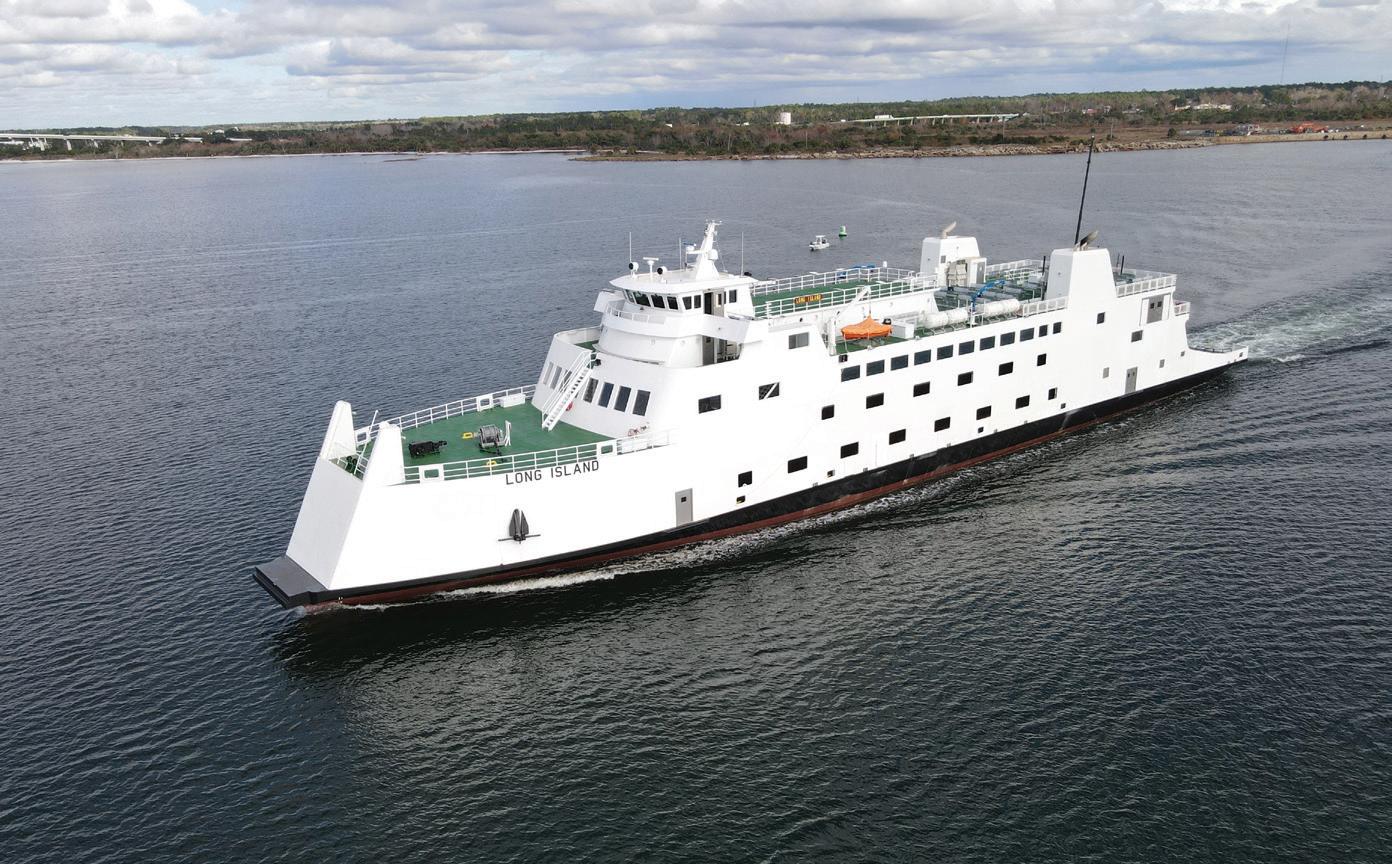
addition to featuring double hulls, there are extensive containment and response systems aboard both barges, as well as firefighting systems and equipment.
Cranes on both barges facilitate the transfer of equipment from shore and handling of hoses. All fueling operations are also required by the port to be boomed.
Both barges are fully compliant with Transport Canada regulations and are classed for their service with Lloyd’s Register. For environmental considerations, the IMO Tier 3-compliant exhausts are equipped with aftertreatment, all diesel-powered machinery has noise abatement, the tanks are fitted with vapor recovery systems, and the lighting is low intensity.
— Bruce Buls
Eastern Shipbuilding Group Inc. (ESG), Panama City, Fla., has delivered the new ferry Long Island to the Bridgeport & Port Jefferson Steamboat Co., a subsidiary of McAllister Towing
The 302'x52' passenger and auto ferry will provide service between Bridgeport, Conn., and Port Jefferson, STORY CONTINUED ON PAGE 36

WorkBoat’s 2024 Boat of the Year award goes to multicat dredge support vessels
By Ben Hayden, Content Editor
The International WorkBoat Show’s 2024 Signi cant Boat award went to Great Lakes Dredge & Dock Corp.’s 99'x41'x12' multicat dredge support vessels, Cape Hatteras and Cape Canaveral, marking the second year in a row that sisterships won the award. The two Damen 3013 multicats were built by Conrad Shipyard, Morgan City, La. “This award underscores the company’s commitment to safety, innovation, and operational excellence in the dredging and maritime sectors,” Great Lakes said in a press release announcing the award.
Main propulsion comes from three Caterpillar 3412D TTA diesel engines producing a total of 2,500 hp at 1,800 rpm. The mains connect to Pro-

marin xed-pitch wheels in Optima nozzles through Reintjes WAF 464 marine gears from Karl Senner with 5.591:1 ratios. The propulsion package

gives the new multicats a speed of 9.6 knots and a bollard pull of 35 metric tons. For added maneuverability, the new multipurpose dredge support ves-

Multi Cat Workboats built in the USA
Explore the options, see what’s on board and discover how it can support your operation.
sels feature a 360° hydraulically driven, 310-hp bowthruster.
Ship’s service power comes from two Caterpillar C 04.4 gensets sparking 107.5 kVA each. Hydraulic power comes from a Caterpillar 3412D TTA engine producing 632 kW of electrical power.
The electronics suite features a Furuno FAR 2117 radar system, Furuno FE-700 echosounder, Furuno DS-80 speed log, Furuno GP-150 D GPS, Furuno NX-700 Navtex, Furuno FA-150 AIS, two Pesch search lights, Cassens & Plat Reflecta 1 compass, Tokimec ES-160 gyrocompass, Transas Navigator Pro chart system, Sea Pilot 75 autopilot, Thrane & Thrane system 500 SSB radios, two Sailor RT5022 VHF radios, twin TR-20 handheld VHFs, and two Sailor H-2095 C Inmarsat-Cs.
“These vessels represent a milestone for our company and the dredging
industry. The multicat design introduces critical safety enhancements by enabling pipe handling and connection work to take place securely on deck, signi cantly reducing the risk of man-overboard incidents,” said Chris Gunsten, Great Lakes vice president of project services and eet engineering. “The vessels are a perfect t with our company’s strong safety culture and already have shown their ability to improve our dredging ef ciency while supporting vital shoreline protection and waterway maintenance.”
Equipped with two large winches and two deck cranes, the new dredge-support vessels can perform a wide range of tasks, including handling submerged and oating pipelines, anchor handling, and logistics supply. Ef ciency is greatly enhanced by eliminating the need for assorted oating support equipment such as derrick barges, towboats, and anchor barges, Great Lakes said.


Builder: Conrad Shipyard
Designer: Damen
Owner: Great Lakes Dredge & Dock Corp.
Length: 99’| Beam: 41’| Depth: 12’
Main Propulsion: (3) Caterpillar 3412D TTA, 2,500 hp at 1,800 rpm
Propellers: Promarin fixed-pitch in Optima nozzles
Marine Gears: Reintjes WAF 464
marine gears with 5.591:1 ratios
Ship’s Service Power: (2) Caterpillar C 04.4 genset; hydraulic power from a Caterpillar 3412D TTA engine, 632 kW
Thruster: 310-hp hydraulically driven bowthruster with 360° maneuverability
Additional Equipment: (2) 40ton capacity Nabrico DF-1-40H winch.
Delivery Date: October 2023


Conrad Shipyard is proud to be recognized by WorkBoat Magazine as the winner of the Significant Boats of 2024 award for our exceptional craftsmanship on the Cape Hatteras and Cape Canaveral vessels.
These cutting-edge ships showcase our unwavering commitment to innovation, precision, and delivering vessels that exceed industry standards. At Conrad Shipyard, we don’t just build ships—we set the benchmark for excellence.
Join us in celebrating this milestone as we continue to shape the future of maritime innovation.




By Ken Hocke, Senior Editor
Hard Rock Marine Services, Jean Lafitte, La., delivered the steel-hulled 130'x31'x5' dinner vessel Craft to Yacht Starship Dining Cruises, Tampa, Fla. The boat was delivered in March and since then has been taking up to 150 passengers on culinary and cocktail river journeys along the Hillsborough River through the heart of downtown Tampa, Fla. The vessel was designed by Dejong and Lebet, Jacksonville, Fla., and has a 3'6" draft. “Craft was a challenging marine design project, as there were limits on the air draft to get under the bridges and limits on the hull draft to meet USCG stability requirements,” said company president
Andy Lebet. “Additional design and regulatory challenges included lengthening an existing hull, adding large overhangs to create added exterior deck space, installing gas cooking, creating separate propulsion engine and generator spaces, as well as ballasting to limit the air draft, and keeping the gross tonnage below 100 to remain a Subchapter T vessel.”
Twin Volvo Penta D-4 175I main engines connect to two Michigan Wheel 20"x23", 4-bladed bronze propellers through Twin Disc MG-5050SC marine gears with 3:1 reduction ratios, giving the boat a running speed of 10 knots. The vessel is tted with an Imtra side power AC 208/240, 60-hp electric thruster for additional maneuverability.

Builder: Hard Rock Marine Services
Designer: Dejong and Lebet
Owner: Yacht Starship Dining Cruises
Length: 130’|Beam: 31’|Depth: 5’
Main Propulsion: (2) Volvo Penta D-4 175I
Controls: Volvo Penta EVC 2.0
Thruster: Imtra AC 208/240, 60 hp
Steering: Kobalt 2-7065B1237T-2
Ship’s Service Power: (2) John Deere 4045 99-kW genset
Capacity: 150 passengers, 50 crew
Delivery Date: March 2024


















Since 1918, Twin Disc has equipped distinguished vessels around the world. Workboat’s recognition highlights the superior performance of our products, our commitment to quality, and the trust of our loyal customers.
We’re gearing up to celebrate these award-winning vessels, so subscribe to “Bearings” and get on our mailing list to receive special invitations for Twin Disc events at WorkBoat ’25.

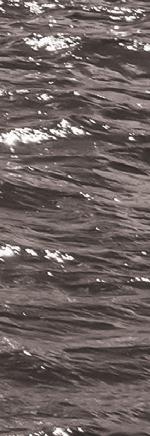

Hybrid-electric ferry is making waves in Texas
By Ben Hayden, Content Editor
In March 2024, the Texas Department of Transportation christened its new 293'x66'x16' double-ended hybrid ferry, the Esperanza “Hope” Andrade, designed by The Shearer Group Inc., Houston, and built by Gulf Island Fabricators, Houma, La.
The vessel provides 2.7-mile transit service between Galveston Island and Bolivar Peninsula. Running at 13.5 knots, the new ferry averages 18 minutes per run.
The ferry can accommodate 495 passengers and 70 cars or eight 18-wheel trailers on its 293'x66' vehicle deck. When fully loaded, the vessel weighs 2,180 tons.
Esperanza “Hope” Andrade is
outfitted with diesel engines and electric motors that are overseen by Siemens Energy’s BlueDrive PLUSC power and propulsion system.
Main electrical generation comes from four Caterpillar C18s, each rated at 596 kW. Propulsion motors include two 1,200-kW Siemens motors, one per Voith Schneider Propeller unit. Each VSP 26RS was built with custom blades.
Siemens Energy’s BlueVault energy storage system uses lithium-ion batteries, with a total of 1.44 MW-hours of energy storage. The system can store surplus power while the ferry is in operation and dispatches it on demand.
Capacities include 6,000 gals. fuel, 1,066 gals. lube oil, 175 gals. hydraulic oil, and 146 gals. degreaser.








Builder: Gulf Island Fabricators
Designer: The Shearer Group Inc.
Owner: Texas Department of Transportation
Length: 293’|Beam: 66’|Depth: 16’
Main Propulsion: Siemens Energy BlueDrive PLUSC
Ship’s Service Power: (4) Caterpillar C18 generator, 596 kW each
Capacities: 495 passengers, 70 cars or eight 18-wheel trailers
Energy Storage System: Siemens Energy BlueVault, 1.44 MWh
Certification/Classification:
USCG Subchapter H, ABS class
Delivery Date: March 2024


By Kirk Moore, Contributing Editor
The maritime industry marked a historic milestone in July 2024 with the arrival of the eWolf, the rst all-electric, ship-assist harbor tugboat in the U.S., operating at the Port of San Diego.
Master Boat Builders, Coden, Ala., delivered the 82'x40'x17'9" eWolf, to Jacksonville, Fla.-based Crowley. The vessel, designed by Crowley’s engineering services team, operates with zero emissions and has the performance capabilities of a traditional tug.
Main propulsion comes from Corvus Energy 6.2-MWh battery power and two 2,100-kW electric motors spinning two azimuth thrusters for a running speed of 12 knots. Twin 300-kW generators augment power for longer transits.
Crowley’s project also includes port technology, featuring a shoreside, microgrid charging and storage station at San Diego.
“The eWolf will provide services through its advanced vessel-control technology and first-in-class energy features, while providing the safety, quality and reliability that Crowley and our mariners are known for,” James Fowler, senior vice president and general manager of Crowley Shipping, said in announcing the eWolf’s arrival.
“We are thrilled to reach this important achievement for our company and the U.S. maritime industry through the collaboration with our partners.”
“Crowley’s first-of-its-kind electric tugboat is a game changer. It checks all the boxes by providing environmental, economic, and operational benefits for our communities and maritime industry,” said Frank Urtasun, chairman of the Port of San Diego. “This is truly a story of teamwork and collaboration.”
Crowley chose eWolf’s name in a nod to a tugboat in the company’s original fleet, the Sea Wolf, which operated more than a century ago in California.
Compared with conventional diesel operations, the electric tug will generate 178 fewer tons of nitrogen oxide, 2.5 tons fewer of diesel particulate matter and 3,100 metric tons fewer of carbon dioxide over the first 10 years of its operations — the equivalent of removing 350,000 gals. of gas from use, according to EPA calculations. The vessel uses ABB’s integrated electrical propulsion system.
On deck is a Markey Machine DEPC-48-50-hp electric render/recover winch. The 200-grt eWolf has an estimated bollard pull of 70 short tons. Tankage includes 9,800 gals. of fuel and 750 gals. fresh water.
“We attract people to the marine industry with these new developments,”

Builder: Master Boat Builders
Designer: Crowley
Owner: Crowley
Length: 82’|Beam: 40’|Depth: 17’9”
Main Propulsion: (2) Schottel
SRP 430 LE rudder propeller with 2,050 kW electric motor
Power: Corvus Energy 6.2-MWh battery power
Electronics: ABB DC distribution system; ABB remote control system; ABB autonomous navigation system
Speed: 12 knots
Ship’s Service Power: (2) 300-kW generator
Estimated Bollard Pull: 70 short tons
Deck Equipment: Markey Machinery DEPC-48-50-hp electric render/recover winch.
Certifications/Classifications: USCG Subchapter M, ABS class
Delivery Date: June 2024
Crowley Engineering’s Coulston Van Gundy, said during a panel session at the 2023 International WorkBoat Show. “We must provide innovative, sustainable vessels for this industry to stay ahead for our customers and the next generation.”



By Ben Hayden, Content Editor
In July 2024, Laborde Marine Management LLC, New Orleans, took delivery of the 78'x34'x10' pushboat Ivy Steiner to launch its new af liate, LabMar Inland LLC. Built by Steiner Construction, Bayou La Batre, Ala., the vessel is intended to bolster the company’s entry into the U.S. inland marine market, providing towing and pushboat services.
The Ivy Steiner is powered by twin 1,000-hp Caterpillar C32 diesel engines paired with Reintjes WAF reverse-reduction gearboxes supplied by Karl Senner LLC, Kenner, La.
The vessel features an 8'6" draft, a running speed of eight knots, and two 40-ton capacity Nabrico DF-1-40H
winches. Ship’s service power is provided by two John Deere-powered 65kW gensets. Accommodations include three single-person rooms and two two-person rooms, while the electronics suite includes Furuno radars, AIS, GPS, and Standard Horizon VHFs.
The vessel is owned by Maritime Partners LLC. “LabMar Inland is bareboat chartering the Ivy Steiner This arrangement allowed us to take delivery of a new vessel immediately and to best respond to the demands of our customers,” Ashton Laborde, president of Laborde Marine Management said. “We plan on growing LabMar Inland and will consider doing so through additional bareboat charters, new construction programs, or by acquiring existing eets.”

Builder: Steiner Construction
Designer: Steiner Construction
Owner: Maritime Partners LLC
Charterer: LabMar Inland LLC
Length: 78’|Beam: 34’|Depth: 10’
Main Propulsion: (2) Caterpillar
C32 diesel, each producing 1,000 hp at 1,800 rpm
Ship’s Service Power: (2) John Deere genset, 65 kW each
Accommodations: (3) single-person room, (2) two-person room
Certification/Classification: USCG Subchapter M
Delivery Date: July 2024



Whether you’re powering an offshore service vessel, a passenger vessel, or an inland pushboat, Louisiana Cat has the right engine for your hard working fleet. We focus on you, the customer, and the reliability, safety and profitability of your business. Let us help you navigate every waterway. Visit us online to request an engine quote for your next project: www.LouisianaCat.com/Marine.



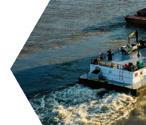








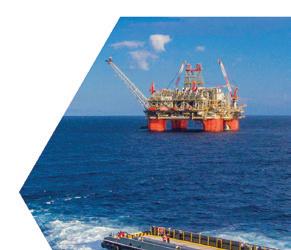


Versatile workboat is custom-built to serve remote Alaskan island
By Ken Hocke, Senior Editor
Brix Marine, Port Angeles, Wash., delivered the new 46'x16'x4'9" aluminum workboat Jackpot Bay to Chenega Corp., Anchorage, Alaska. Chenega Corp. is a Native village corporation headquartered in Anchorage, but the village of Chenega and its traditional Native lands are located on a remote island in the southwestern corner of Prince William Sound, about 120 miles southeast of Anchorage.
“The corporation sought to custombuild a boat specific to the corporate needs of accessing the village and our surrounding properties as well as supporting commercial customers with a variety of small workboat requirements to include crew transportation,” said Adam Turner, general manager of Chenega Regional Development Group LLC, who noted Jackpot Bay is Chenega’s second vessel built by Brix Marine. “Brix’s level of versatility within not only their customization process but their willingness and ability to see a vision and bring it to reality is what brought us back for another boat. The quality of their manufacturing plant, innovative process flow, and project management is what continues to give us confidence in their ability to hit the mark Chenega needs.”

A common day trip for the landing craft catamaran vessel is a 180-mile round trip by water. Among the boat’s responsibilities are crew transport, accessing property, commercial customer support and various other workboat-related requirements.
Main propulsion comes from four Yamaha 450-hp outboard engines whose XTO stainless steel 16-5/8"x18", 3-bladed propellers spin at 1,800 rpm. The propulsion package gives the boat a top speed of 44 knots. Ship’s service power is the responsibility of a Northern Lights 12kW genset. Two-station controls and the steering system are handled by Yamaha’s Helm Master packages.
The cargo deck can handle up to 10,000 lbs. of freight. It accommodates one crewmember and up to 18 passengers.
Capacities include 600 gals of fuel and 55 gals. water. Ancillary equipment includes a hydraulic bow landing ramp and a Morgan Marine 200.3 crane.
The Garmin electronics suite contains two 16" GPS MAP touchscreen, XHD 4-kW six open-array radar, 1-kW transducer, VHF, PA system, and two cameras.
“In a business day, our work team can travel from Anchorage Alaska to the Native Village of Chenega,” said Turner. “The boat was built to move employees, residents, contractors, and all the necessary gear for our

Builder: Brix Marine
Designer: Brix Marine
Owner: Chenega Corp.
Vessel Type: Landing Cat
Length: 46’| Beam: 16’|Depth: 4’9”
Main Propulsion: (4) Yamaha 450 hp outboard
Propellers: 3-bladed XTO stainless steel 16-5/8”x18” turning 1,800 rpm
Controls: Yamaha Helm Master
Speed: 20 knots cruise, 44 knots top
Ship’s Service Power: Northern Lights 12-kW genset
Hull Construction: Aluminum
Tankage: (2) 300 gals. fuel
Capacity: Up to 18 passengers, two crew, 12,500 lbs. cargo
Certifications/Classifications:
USCG Subchapter T
Delivery Date: May 2024
numerus projects, all in a day trip. It makes Prince William Sound that much smaller and our remote journeys that much less complicated. This translates to more efficient travel. Additionally, this stable vessel travels faster so we need smaller weather windows for safe transit, giving us more operational days over the year.”























Ken Hocke, Senior Editor
Breaux Brothers Enterprises, New Iberia, La., delivered the 67'x17'x7.5' Pride of Maui, to owner Scott Turner’s Pride of Maui, Wailuku, Hawaii. Breaux Brothers also designed the 49-passenger aluminum catamaran, giving the boat a 4' draft.
“This boat is actually the Pride of Maui ‘Elua, which means two in Hawaiian,” Vic Breaux, the shipyard’s vice president, said from the wheelhouse of the new boat after delivery in April 2024. “We built the fi rst Pride of Maui 30 years ago, and that boat is still running.”
Main propulsion comes from twin John Deere engines producing 650 hp at 1,800 rpm each. The
diesels are connected to ZF wheels through Twin Disc gears. The propulsion package gives the new boat a running speed of 18 knots.
“I could have built the boat in California, but the quality and craftsmanship this yard gives me was worth it,” said Turner. “They built the fi rst Pride of Maui, and we couldn’t be happier with it. It’s the best built boat on the island of Maui.”
Turner said the boat will be used for a number of different excursions including tours, snorkeling, whale watching, weddings, and more. “Even with the added transportation costs, it’s worth it,” said Turner, “and it’s the only air-conditioned tour boat on the island. Everything on this boat is high-end.”

Builder: Breaux Brothers
Designer: Breaux Brothers
Owner: Pride of Maui
Length: 67’| Beam: 17’|Depth: 7.5’
Main Propulsion: (2) John Deere
650 hp/1,800 rpm
Propellers: ZF
Marine Gears: Twin Disc
Speed: 18 knots
Ship’s Service Power: (2) Northern Lights genset
Hull Construction: Aluminum
Capacity: 49 passengers
Certifications/Classifications: USCG Subchapter T
Delivery Date: April 2024



Pride of Maui A WorkBoat Significant Boat of 2024!

For more than a century, operators have trusted ZF with keeping them in motion on the water. As the new wave of electrification sets in, ZF introduces innovative and smart propulsion technology. Whether your operational goal is to reduce fuel consumption or “go green,” ZF has the forward-thinking marine propulsion solutions to take you there.








Ken Hocke, Senior Editor
Seattle-based Snow & Co. delivered Resilience, a 49.7'x15.9'x7.54' hybrid catamaran aluminum research vessel, to the U.S. Department of Energy’s Pacific Northwest National Laboratory (PNNL) in midsummer 2024. Resilience was designed by Incat Crowther as a low-emissions vessels with practical solutions for scientific mission requirements.
The 28-sq.-meter main deck is equipped with a 5,000-lb. capacity Aframe, a 1,000-lb. capacity boom crane and a 500-lb. capacity movable davit. Stairs offer direct access from the main deck to the upper deck and flybridge, which affords all-round visibility.
The vessel accommodates up to six scientists in a tailored layout in workstations and convertible sleeping arrangements.
A parallel hybrid-electric propulsion system has two Volvo Penta D8-510 main engines rated for 501 hp at 2,850 rpm each, supplemented by two Danfoss Editron EM-PMI375-T200-2600 electric motors. The mains connect through Twin Disc MGX-5075 SC gearboxes. The electric propulsion mode allows the vessel to operate quietly on electric power between 1-6 knots for four hours, cruise at 20 knots, and top at 23 knots.
Power is stored with a 113-kW Spear Trident battery system, so the vessel can operate quietly in a zeroemission electric state while surveying.
By Ben Hayden, Content Editor
Senesco Marine, North Kingstown, R.I., launched the WindServe Explorer in March 2024, a Jones Act-compliant crew transfer vessel (CTV) for its sister company, WindServe Marine. Both companies are part of the Reinauer Group
The WindServe Explorer represents the fourth delivery in a six-vessel contract with WindServe Marine.
The 88.5'x30' aluminum catamaran, designed by BMT, Houston, has a 5'6" draft. The WindServe Explorer was the last 88.5' CTV of the series before Senesco Marine extended the engine control room 6' to support hybrid-ready capabilities. The change in design is implemented on both the WindServe Frontier (Aug. 2024) and WindServe Spartan (Dec. 2024).
“We’re not supplying the hybrid system at this time, but in the event a customer in the future wants that,
there’s enough room in the back of the engine room to go hybrid,” Senesco president Ted Williams said Powered by quad Volvo Penta D13 main engines, each rated at 690 hp at 2,300 rpm and connected to a Volvo Penta IPS 900 propulsion system, the vessel achieves a service speed of 24 knots and a top speed of 27 knots. It is equipped with Volvo joystick controls and a dynamic positioning system for maintaining position in challenging conditions.

Builder: Snow & Co.
Designer: Incat Crowther
Owner: U.S. Department of Energy/Pacific Northwest National Laboratory
Length: 49.7’|Beam: 15.9’|Depth: 7.54’
Main Propulsion: (2) Volvo Penta D8-510, 501 hp at 2,850 rpm each; (2) electric Danfoss Editron EM-PMI375-T200-2600 electric motors
Ship’s Service Power: Spear Trident battery system, 113-kW
Delivery Date: Summer 2024

Builder: Senesco Marine
Designer: BMT
Owner: WindServe Marine
Length: 95’|Beam: 30’|Draft: 5.6’
Main Propulsion: (4) Volvo Penta D13, 690 hp at 2,300 rpm each
Propellers: Volvo Penta IPS 900 propulsion system
Ship’s Service Power: Kohler Marine generators
Capacities: 6 crewmembers, 24 offshore technicians; 9,715 gals. fuel, 792 gals. fresh water; 20 tons cargo on 540 sq. ft. forward deck space
Delivery Date: March 2024

Additional onboard equipment includes Kohler Marine generators, a Toimil T-12505M/2 forward deck crane, a Hercules AAW-150 anchor windlass, and a Reygar BAREFleet vessel monitoring system. The vessel’s fuel capacity is 9,715 gals., with 792 gals. freshwater storage and 540 sq. ft. forward deck space supporting a 20-ton cargo capacity. The vessel is built to Coast Guard Subchapter L certification and ABS class.

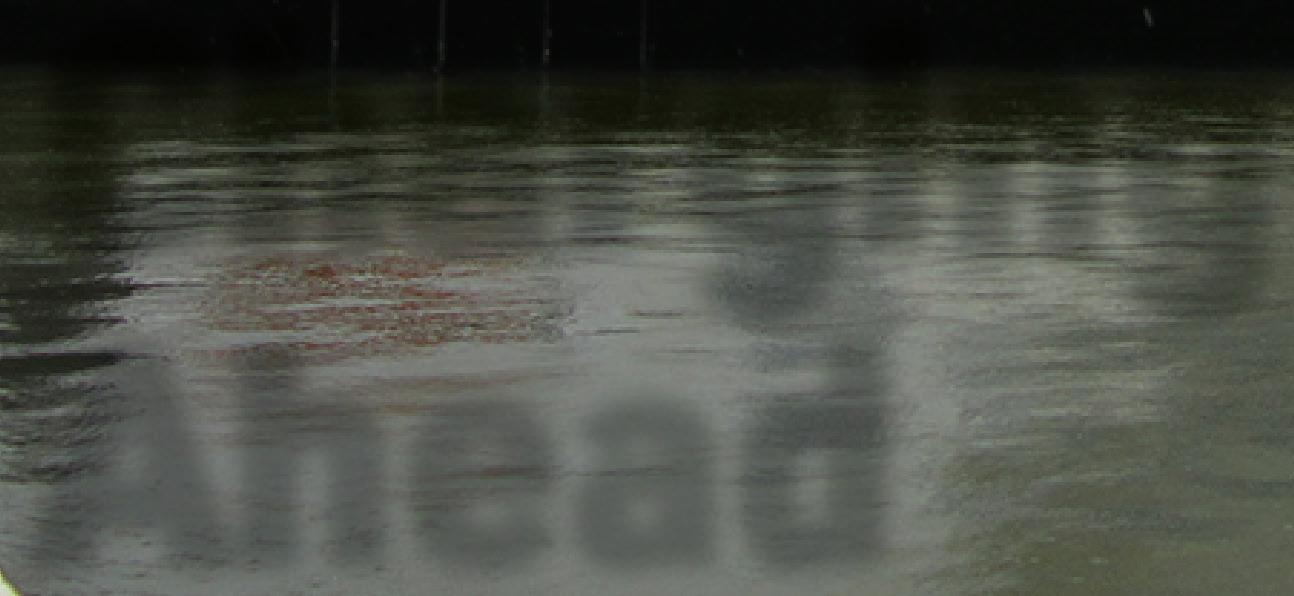
Shift to hybrid propulsion gains momentum in the U.S. ferry sector.
By Eric Haun, Executive Editor
In the ferry sector, what was once a rarity is now becoming commonplace.
“If you look at new ferries globally, and speci cally in North America, we’re seeing the majority of them being designed and constructed to be hybrid electric,” said Ed Schwarz, head of marine solutions sales for the U.S. and Canada at Siemens Energy. “It’s the rare exception, now, that’s mechanical.”
Increasingly, owners and operators of working vessels are exploring opportunities to adopt electric-diesel hybrid propulsion systems, eying the opportunity to reduce emissions and save on maintenance costs, among other bene ts.
Of all commercial vessel types, ferries are arguably best suited for hybridization and electri cation due to their design characteristics and operational pro les that typically consist of short, repeated routes. And while today’s fully electric propulsion systems do not suf ce for many routes and vessel types, hybrid systems can often meet their needs and are usu-
ally less challenging to integrate. Steel-hulled, double-ended road ferries, which are typically longer, wider and operate on de ned routes, are perfect candidates, Schwarz said.
“These ferries tend to have a lot of space below deck plates, allowing for additional equipment… You don’t need to wait for the next technology evolution. Existing hybrid technology ts well to the ferry design,” Schwarz said. “A lot of the hybridization is based on operational pro le, so having one that is very well de ned for the life of a vessel can make it well suited for hybridization.”
In recent years, the shift toward hybrid ferry propulsion has accelerated, driven by factors such as technological advancements, political incentives, increased availability of grant funding for green projects, and growing market acceptance. Additionally, many ferry operators are government agencies with their own decarbonization mandates. The nation’s largest ferry operator, Washington State Ferries, for example, is currently working toward transitioning its eet to hybridelectric propulsion to reduce emissions and improve sustainability. San Francisco Bay Ferry, which has said it will no



Efficient propulsion on board the Esperanza “Hope” Andrade is expected to reduce fuel costs by about $180,000 this year.
Esperanza “Hope” Andrade entered service for the Texas Department of Transportation in 2024. It operates on the 2.7-mile route connecting Galveston Island with the Bolivar Peninsula.
longer order vessels with conventional diesel propulsion, is developing a new eet of fully electric passenger ferries.
Beyond their green advantage, electric-diesel hybrid propulsion systems present many operational bene ts, as has been seen by the Texas Department of Transportation (TxDOT) aboard its new 293'x66'x16' double-ended hybrid ferry, Esperanza “Hope” Andrade, which entered service in 2024 on the 2.7-mile route connecting Galveston Island with the Bolivar Peninsula. The vessel was designed by The Shearer Group Inc., Houston, and built by Gulf Island Fabricators, Houma, La.
The 495-passenger, 70-car ferry is out tted with four EPA Tier 3 Caterpil-
lar C18 diesel engines, each rated at 596 kW, two 1,200-kW Siemens electric propulsion motors, and a pair of Voith Schneider Propeller 26RS units with custom blades. All are overseen by Siemens Energy’s BlueDrive PLUSC power and propulsion system. Siemens Energy’s BlueVault energy storage system (ESS) uses lithium-ion batteries, with a total of 1.44 MWhours of energy storage. The ESS is charged by the diesels and can store surplus power while the ferry is operating and dispatches it on demand.
“The top reason for choosing hybrid propulsion was safety,” said Danny Perez, a public information of cer with TxDOT. “The redundancy that hybrid provided in the way of propulsion and hotel load was extraordinary. The choices of running on engines only, in hybrid mode, or battery alone mode for 30 minutes gives us the utmost exibility and knowledge that we should be able to get our vessels back to homeport in the event of propulsion emergencies… The runtime to return to our homeport is well within the range for battery-alone mode if needed at any point in our route.”
In addition, the ferry delivers fuels savings and helps TxDOT to reduce
its carbon footprint. “We anticipate fuel savings due to the hybrid nature of this vessel as well as using smaller more ef cient engines that meet Tier 3 compliance without the expense of urea injection required by larger Tier 4 engines,” Perez said. “Depending upon weather and sea current conditions, our fuel savings ranges from 10 gals. to 15 gals. per operational hour. Extrapolating out for a year represents a savings of $180,000 per year. Going from below-tier EMD 645 roots blower main engines in our older ferries to Tier 3 Caterpillar C18 engines represents a huge reduction in emissions.”
On board the Esperanza “Hope” Andrade, the technology supplied by Siemens Energy is key to unlocking further ef ciencies. The Siemens BlueDrive, like the ferry’s batteries, is based on a direct-current (DC) system, which makes power integration and distribution through the DC network easier, Schwarz said, noting Siemens has protections and input circuits that make the system safe and redundant.
“Automation software runs behind the system to ensure all the engines are coming on and off as they need to, that the power is being distributed, the power management system that’s talking
to the whole system, making sure that we’re evenly distributing loads, making sure that the batteries are in a good safe place when we talk about charging and dissipating power,” Schwarz said.
Currently, no shoreside charging infrastructure is in place to support the Esperanza “Hope” Andrade. “When infrastructure is available for charging, the [onboard] system has the ability to accommodate that,” Schwarz said.
In North Kingstown, R.I., Senesco Marine is currently building an electric-diesel hybrid ferry, Battery Steele, for Casco Bay Lines, which provides ferry service throughout Casco Bay from Portland, Maine. The double-ended ferry was designed by Elliott Bay Design Group (EBDG) and features hybrid propulsion and automation systems supplied by ABB
Nick Mavodones, operations manager at Casco Bay Lines, said the operator evaluated several propulsion system types, including diesel mechanical and diesel hybrid assist, before selecting an electric-diesel hybrid setup utilizing electric motors for propulsion, energy storage for primary power and onboard generators for backup power.
“We looked at capital costs, operational costs, system reliability, system serviceability, and operability,” Mavodones said. “We also considered environmental impacts associated with the operating system and what the passenger experience would be from a


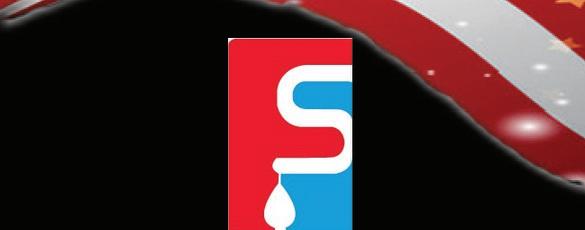

noise, vibration, and air quality experience while at berth… Ultimately, the electric-diesel hybrid option provided the best overall operational cost bene t as well as a superior environmental and passenger experience.”
The move from a twin-screw, single-ended ferry to a single-screw, double-ended ferry with a propeller at each will allow Casco Bay Lines to realize the full bene ts of the hybrid propulsion system. “It became clear the responsiveness offered by the electric motors and this technology offered a better potential experience for our crews and passengers,” Mavodones said.
In addition, the Battery Steele’s route to and from Peaks Island, Maine, is short enough that the vessel will be
able to operate a complete round trip on battery power and recharge fully at the berth in Portland. “The electric grid infrastructure near the terminal was such that a major upgrade of the grid to support a rapid charger would not be necessary, and the selection of an automated rapid charger would allow us to charge in a timely fashion and meet the demanding schedule of 17 round trips per day during our busy season,” Mavodones said. “The back-up diesel generators would assist in the event there is ever an issue with the grid or the energy storage system and to assist in managing costs during electrical peak-demand periods to avoid high demand charges when the electrical grid is near capacity.”





















The biggest drawback of the propulsion system, Mavodones said, turned out to be the upfront cost, which Casco Bay Lines was able to overcome with the help of grant funding from the Federal Transit Administration (FTA), the Maritime Administration (MARAD) and the State of Maine through its Department of Transportation.
Unforeseen challenges have caused the build program to fall behind schedule. “Given that this technology is relatively new to the shipbuilding industry, there have been challenges associated with securing adequate engineering and labor support for the more complex and extensive electrical

systems associated with this work,” Mavodones said.
A lack of U.S. suppliers for several key components has also caused difficulties. When the project’s original ESS manufacturer, Spear Power Systems, Grandview, Mo., decided to cease marine battery production, Casco Bay Lines was forced to find a replacement. Corvus Energy, which opened a factory in Bellingham, Wash. in 2023, was able to step in as the new supplier, but the switch required the propulsion system to be reengineered.
“There have been challenges to comply with Buy America requirements associated with the federal funding
sources secured for the work. As this technology becomes more common in the U.S., additional domestic supply outlets should become available to help with this issue,” Mavodones said.
Casco Bay Lines anticipates Battery Steele will be delivered in the fall and operational before year’s end. When the new ferry enters service, cost savings will follow, Mavodones said. “We expect to save approximately $100,000 in operating costs per year that will help to maintain lower ticket prices for our customers,” he said. “These savings will be obtained through lower energy costs and lower maintenance costs associated with the system.”

The new TxDOT and Casco Bay Lines vessels are part of a growing fleet of hybrid ferries in the U.S.
In addition to the Battery Steele, Senesco Marine is also building a 250-passenger, 23-car diesel-electric ferry for the Maine State Ferry Service. The 154'x38' Capt. Almer Dinsmore, designed by Gilbert Associates, is a hybrid sister vessel to the Capt. Richard G. Spear, which was built in 2021. The new ferry was christened in Nov. 2024 and slated to enter service this year. The ferry features a BAE Systems HybriGen power and propulsion system, with a pair of 600-hp Caterpillar C-18 diesels, 150-hp electric boost motors, two Caterpillar 9.3 generators and battery banks from Spear Power Systems. Karl Senner LLC. supplied the Reintjes hybrid gearboxes.
A pair of hybrid ferries built by Derecktor Shipyards, Mamaroneck, N.Y., was recently christened for Chatham Area Transit. The 65' aluminum catamarans, Juliette Gordon Low II and Susie King Taylor II, will operate on short, continuous routes between three local landings in Savannah, Ga. The vessels are designed to transport up to 149 passengers at a top speed of 11 knots using BAE Systems HybriGen Power and Marine Jet Power Ultrajet 305 dual waterjets, making them the first hybrid ferries in the U.S. with waterjet propulsion. Each ferry is equipped with a pair of Cummins 6.7L marine diesel generators, BAE HDS 200 integrated starter generator, and 308 kWh XALT lithium-ion batteries.
A 190' ferry being built by Conrad Shipyard LLC, based in Morgan City, La., will be the first hybrid-electric ferry for New York City. The new EBDG-designed Governors Island ferry will feature a propulsion system offering the flexibility to operate on either zero-emission, battery-only power or a battery-assisted hybrid with diesel backup. The ferry will replace the 1,000-hp diesel-electric Lt. Samuel S. Coursen, which was commissioned by the Army in 1956.


By Michael Crowley, Correspondent
Since 2014, the National Transportation Safety Board’s Office of Marine Safety has published the Safer Seas Digest, an annual report examining actions that jeopardize the safety of vessels, personnel, and the environment. The most recent edition, released in June 2024, examines 31 investigations completed by the NTSB in 2023. The report analyzes the causes of these accidents and offers lessons that can be learned from each incident.
Fatigue is a recurring theme in accident investigations and is cited in several of the 2023 incidents. One of those involved the Cathlamet, a Washington state passenger and car ferry that struck a terminal dolphin at Seattle’s Fauntleroy Ferry Terminal in July 2022.
The ferry’s captain was at the Cathlamet’s wheel as it approached the terminal and its dolphin, which the 328'x78'8" vessel then hit, without speed

reduction or course correction. After the allision, the master had to be prompted three times to avoid running aground. There were no rudder commands for 28 seconds before the allision. The incident resulted in one minor injury and $10.3 million in damages.
Fatigue was the obvious issue, NTSB investigators found. The ferry’s master was getting five to six hours of sleep before arriving at the ferry between 0330 and 0345 each morning and would not sleep before assuming command at
0720. Sleep debt builds up over several days for those getting less than eight hours of sleep, which the board said explains why the ferry master did not reduce speed and properly line up the Cathlamet as it approached the dock. The board said the master’s incapacitation was “likely due to a microsleep” — uncontrolled sleep episodes lasting a few seconds. The master said he did not recall what happened.
The repetitive nature of ferry operation can contribute to the microsleep
threat. In the Cathlamet report, the board said “Mariners should understand the… dangers of fatigue, such as microsleeps. In addition, repetitive operations such as ferry transits — back and forth on the same route — require operators to sustain a high level of vigilance to prevent complacency.
“Complacency occurs when operators repeatedly complete a task without consequence, desensitizing them to its inherent risk.”
Cellphone misuse is another common cause of accidents, and it is cited by the NTSB in its report on a July 2022 collision involving two vessels vastly different in size 66 miles south of Port Fourchon, La. The 590'x104' bulk carrier Bunun Queen, traveling 14.4 knots, struck the port side of the 96'x 34' offshore supply vessel (OSV) Thunder, which was traveling at 9 knots.
The board’s accident report notes that “The Convention on the International Regulations for Preventing Collisions at Sea requires that every vessel shall at all times maintain a proper lookout by sight and hearing as well as by all available means appropriate.” Yet, in the period leading up to the collision, the NTSB found that “neither vessel’s officer on watch maintained a lookout—either by visual scanning or by using available electronic means.”
The watch officers on both vessels were involved with non-navigational tasks. The Thunder’s master was using a cellphone, and aboard the Bunun Queen, the second officer was doing other duties while the able-bodied seaman assigned to lookout was resting in his cabin. Each


vessel appeared as a radar and AIS target on board the other vessel, but neither vessel was being tracked.
The Bunun Queen’s bow struck the Thunder’s port side, flooding the OSV’s propulsion room and three other spaces. Eleven of the 18 crew were evacuated. The other seven remained aboard to control flooding while the vessel was towed to port. Damage to both vessels totaled $12.3 million.
Of the 31 accidents analyzed, several resulted in the NTSB recommending new safety regulations to the Coast Guard. One recommendation stemmed from a June 2022, engine-room fire on the 169' passenger vessel Spirit of Norfolk while it was on a sightseeing cruise on the Elizabeth River, near Norfolk, Va. Aboard were 108 people, including 91 passengers (36 of whom were children), seven crew, and 10 hospitality staff.
Firefighters could not gain access to the engine room, which was consumed by thick black smoke and flames. Passengers and crew were transferred to a Good Samaritan vessel. The Spirit of Norfolk was towed to a pier at Navy Station Norfolk, but only after four days was the fire extinguished. The vessel, valued at $5 million, was a total loss.
The NTSB determined that the fire started in the engine room and was likely sparked by combustible materials stored near the port generator exhaust piping. Due to regulatory exemptions, no engine room fire detection system was required. This delayed discovery of the fire and allowed it to grow. In addition, there were no requirements for a fixed gas fire-extinguishing system, and thus,
no safe methods for fighting the fire.
The NTSB recommended that the Coast Guard require “existing exempted Subchapter K small passenger vessels that were in operation as of March 10, 1995, be fitted with a fire-detection system and a fixed gas fire-extinguishing system in their engine rooms.” The board also proposed improved contingency planning for marine firefighting.
Neglected vessel maintenance is often the cause of disaster, as was seen in a June 2022 Gulf of Mexico capsizing.
The 195'x70' crane barge Ambition — made up of two barges, one 27 years old and the other 24 years old, that were welded together in 2020 to create a deck barge — was being towed toward the Mississippi River by the 94'x29' Karen Koby. The Ambition suffered from a lack of watertight integrity, with at least six hatch covers either missing or not secured. Nearly five hours into the trip, the Karen Koby’s speed dropped, and about 30 minutes later, the Ambition capsized and partially sank in about 54' of water. No one was injured, and damage was estimated to be $6.3 million.
The “barge owner’s lack of hull inspection and maintenance and not conducting permanent repairs” was cited as the probable cause. Corrosive deterioration of bottom and bilge knuckle plating and their subsequent separation allowed for progressive flooding that caused Ambition to heel to port, exposing an open hatch to seas reaching the main deck.
The barge’s owner did not have an inspection or maintenance plan for Ambition’s hull, and thus permanent repairs were not made in critical areas.


CONTINUED FROM PAGE 19
N.Y., across Long Island Sound.
Designed by Gilbert Associates, Braintree, Mass., the ferry is powered by twin EPA Tier 4 Electro-Motive Diesel 12 ME 23B diesel engines, each producing 3,000 hp at 900 rpm and driving Reintjes WAF 3445 3.083:1 reduction gears delivering power to fixed-pitch propellers.
Ship’s service power comes from three John Deere 6135 AFM85 diesel generators, each producing 300 kw at 1,800 rpm, including two Berg MTT113 FPL bowthrusters, each driven by John Deere 6135 AFM85 diesels rated 500 hp at 2,000 rpm and coupled to Reintjes WVS 234 1.50:1 reduction gears. Steering controls are by Jastram.
Karl Senner LLC supplied the reduction gearboxes and control systems for main propulsion and bowthrusters, as well as the Berg bowthrusters.
The addition of the Long Island ferry is designed to establish a consistent three-vessel schedule during peak travel periods, improving both capacity and reliability of service across Long Island Sound.
Snow & Company Inc., Seattle, recently launched the second of two 50'x16'8" aluminum pilot boats for the Crescent River Port Pilots’ Association, New Orleans. Designed by UKbased Camarc Design, the aluminum pilot boats have a refined hull with enhanced fuel efficiencies and reduced slamming accelerations, which provide all-around seakeeping capabilities. The vessels are powered by twin Volvo Penta D13-800 EPA Tier 3 marine diesel engines, each producing 800 hp at 2,300 rpm. The mains are connected to HamiltonJet twin HJ403 waterjets with two Station AVX express con-

“This delivery is a proud moment for our team,” Joey D’Isernia, Eastern’s CEO and chairman said in a December statement. “It represents our strong partnership with McAllister Towing and our dedication to enhancing the infrastructure for Long Island’s residents and visitors. The Long Island will be a critical asset, delivering safe, reliable service and embodying our commitment to quality and innovation.”
The new ferry joins two other Eastern-built vessels in the operator’s fleet: P.T. Barnum and Grand Republic, delivered in 1999 and 2003.
McAllister Towing has commissioned more than a dozen vessels from ESG.
“P.T. Barnum, the founder of the ferry, once said that the noblest art is that of making others happy,” said Buckley McAllister, the ferry company’s president. “All of those who have worked to make the ferry service what it is today can be very proud of their role helping drivers on the I-95 and Long Island Expressway. Eastern Shipbuilding has provided our company with over a dozen high-quality vessels and transformed the maritime services we can offer.”
trols through Twin Disc MGX-5136SC marine gears. The combination allows for an expected top speed of 35 knots and a running speed of 32 knots. Seaspan’s Vancouver, British Columbia, shipyard christened and launched the HMCS Protecteur, the first of the Royal Canadian Navy’s (RCN) new Protecteur-class auxiliary oiler replenishment (AOR) vessels, in December. The 570'x79' Protecteur is the longest ship in Canada’s fleet and the fifth vessel to emerge from the joint support ship program, part of a broader initiative to modernize the Royal Canadian Navy’s surface fleet. The Protecteur-class ships will replace the RCN’s aging AOR vessels. Two ships are planned as part of the program. Seaspan officials said the new AORs are capable of global deployment in both open-ocean and littoral environments. The ships are intended to carry fuel, ammunition, spare parts, and other supplies to support at-sea operations, while also providing logistical support ashore and the ability to respond to security threats. Seaspan began construction of the Protecteur in June 2018. Originally scheduled for delivery in 2023, the vessel’s commissioning is


now expected in late 2025. The second ship in the class, the Preserver, is projected for delivery in 2026.
All American Marine Inc. (AAM), Bellingham, Wash., has been selected to build a series of new 100'x26' battery-electric, zero-emission, high-speed passenger ferries for operator San Francisco Bay Ferry. SF Bay Ferry announced in December that its board of directors authorized the agency to award AAM a $46 million contract for three 150-passenger vessels. The deal includes an option for a fourth vessel. Aurora Marine Design, San Diego, led the conceptual design of the vessels, and New Zealandbased Teknicraft will work with AAM as the naval architect. Wärtsilä is serving as SF Bay Ferry’s electrification system integrator.


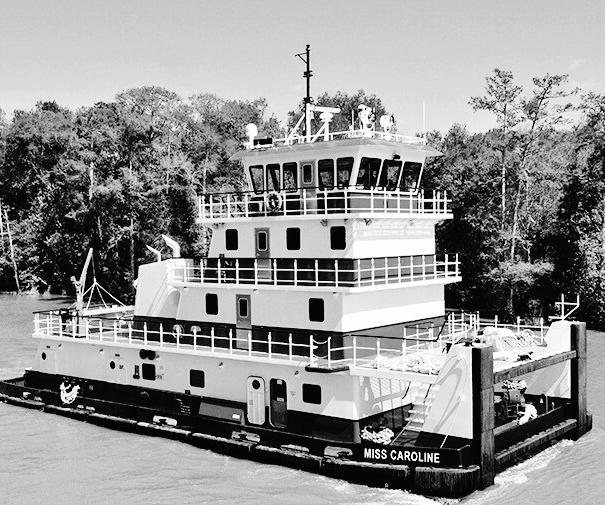





















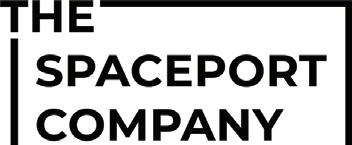
Wheelhouse positions: Captain, Mate, Purser Engine Room positions: Chief Engineer, 1st Assistant, 2nd Assistant, Oiler, Fishmeal Technician
Galley positions: Chief Steward, Cook, Prep Cook, Galley Assistant, Housekeeper Deck positions: Bosun, Deck Boss, Deckhand, Deckhand Trainee
Factory positions: Baader Technician, Surimi Technician, Quality Control, Foreman, Factory Mechanic, Processor














Contact:
















•
•
•
•
•























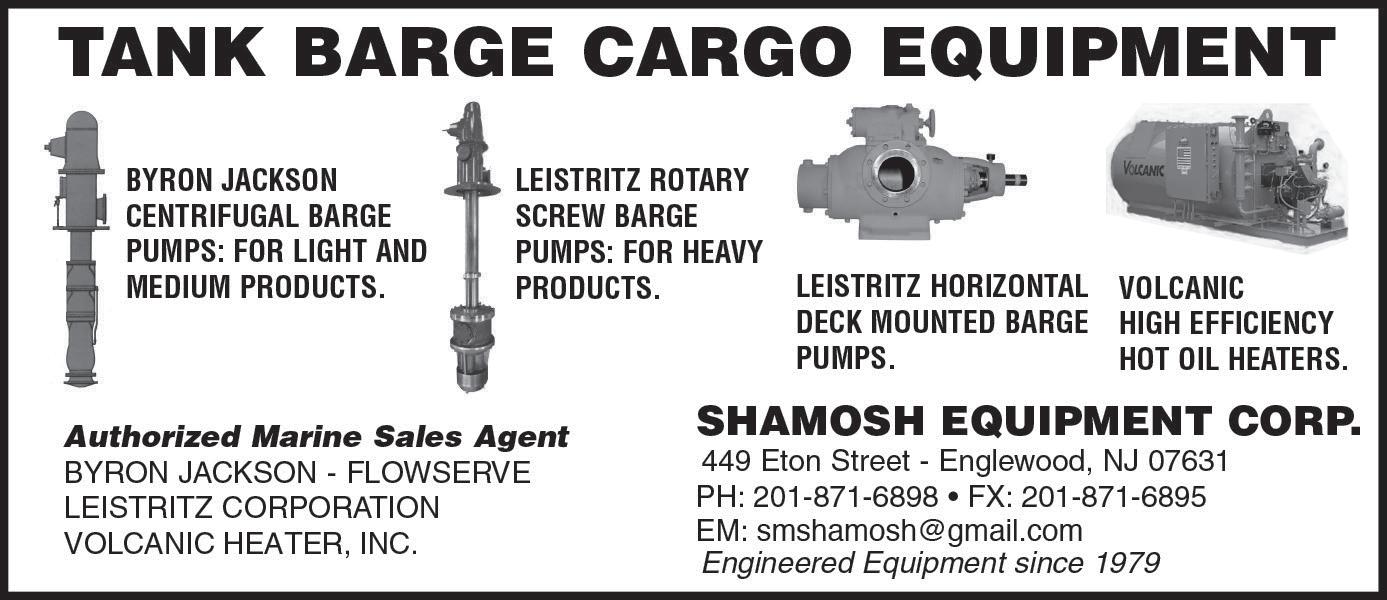



















• Two identical bills which would require Coast Guard inspection of dieselpowered towing vessels, licensing of operating personnel, and establishment by the Coast Guard of manning scales were introduced in the opening days of the 89th Congress by the same legislators who introduced similar legislation in the previous Congress.
• Sea Service Inc., New Orleans, re-









cently placed in service the supply vessel Southern Service, the latest addition to its growing eet. The 154'x38'x12'6" vessel, designed for greater maneuverability in turbulent seas, is equipped with 1,530-hp diesels that power the vessel to a speed of about 13 knots. The Southern Service has a heavy-duty bow windlass, extra wide stern gate and port and starboard gates for loading service equipment. The 120'x30' cargo deck has a capacity of 550 tons.
• Proposals to impose navigation tolls to recover federal costs of maintaining navigable depths on inland rivers and harbors could dramatically increase freight rates on bulk commodities, Harry N. Cook, executive vice president of the National Waterways Conference Inc., warned recently.
• Chotin Transportation Inc., New Orleans, recently placed in service a new 5,300-hp towboat, the Margaret O, designed and built by St. Louis Ship, a division of Port Industries



• The vessel building tempo has de nitely picked up at RMI Inc. The National City, Calif.-based shipyard (located just south of San Diego) recently christened a privately developed SWATH (small waterplane area twin hull) vessel and at the same time laid the keel for the rst SWCM (special warfare craft medium) to be delivered to the U.S. Navy. The 60' SWATH vessel, named the Halycon, is designed for
both military and commercial usage.
• Of cials of the federal government's Of ce of Management and Budget (OMB) and the Army Corps of Engineers met in December to hammer out administrative proposals on the nancing of inland waterways, port construction and operation and maintenance (O&M). Sources indicate that the proposed cap on federal inland waterway expenditures has been abandoned.
• Under current plans, an estimated $150 million worth of construction work on the Tennessee Tombigbee Waterway could be underway by spring 1975. The gure includes estimated costs on two locks and dams to be located in Aliceville, Ala., and Columbus, Miss. They are expected to cost $90 to $100 million. The waterway work continues on an accelerated schedule set by Congress for completion in 1981.






The cutting-edge of commercial marine meets a 45-year maritime industry tradition at The International WorkBoat Show. As the maritime industry embraces innovation, The WorkBoat Show remains at the forefront, driving progress and propelling the industry forward.
Join us in December alongside Underwater Intervention to experience the dynamic synergy between the commercial marine and subsea industries.










Golding Barge Lines’ decision to go exclusively with Karl Senner LLC and the REINTJES gearbox for our fleet is one we are very proud of. The quality of the equipment and the level of service behind it has been exceptional. We are confident the future of Karl Senner is well positioned as the next generation takes the company forward. ”
AUSTIN GOLDING | PRESIDENT AND CEO

Karl Senner, LLC is proud to equip the M/V Whit Golding with three REINTJES WAF 773 Reverse Reduction Ge arboxes.
OW N E R : GOLDING BARGE LINE
DESIGNER : STERLING MARINE
BUILDER : VESSEL REPAIR


